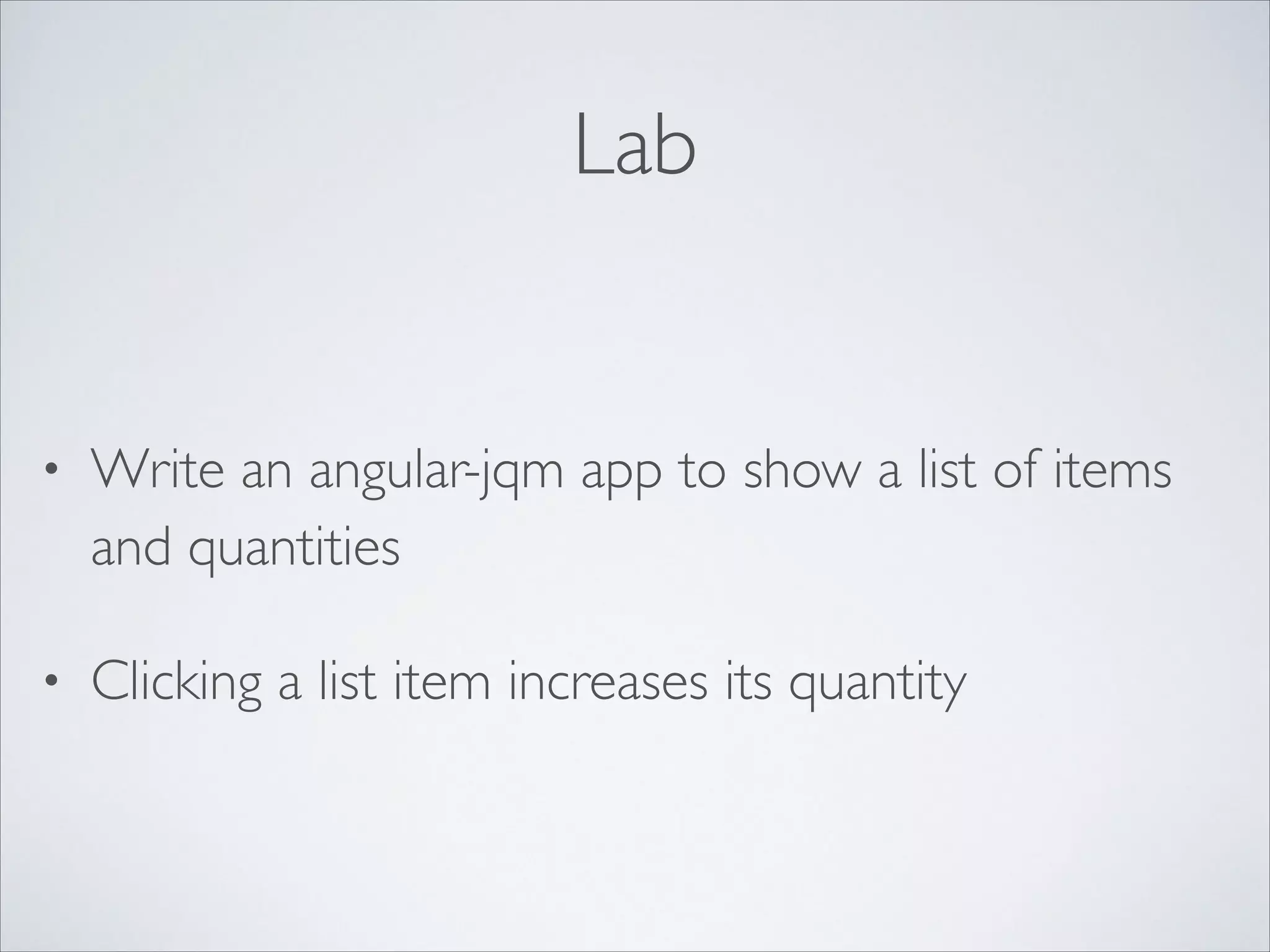The document provides an overview and introduction to AngularJS. It discusses key Angular concepts like data binding, directives, filters, controllers and scopes. It also covers using Angular for client-side routing and communicating with servers to retrieve data. Example code snippets are provided to demonstrate concepts like controllers, directives and routing. Labs and exercises are included to apply the concepts by building sample Angular applications.

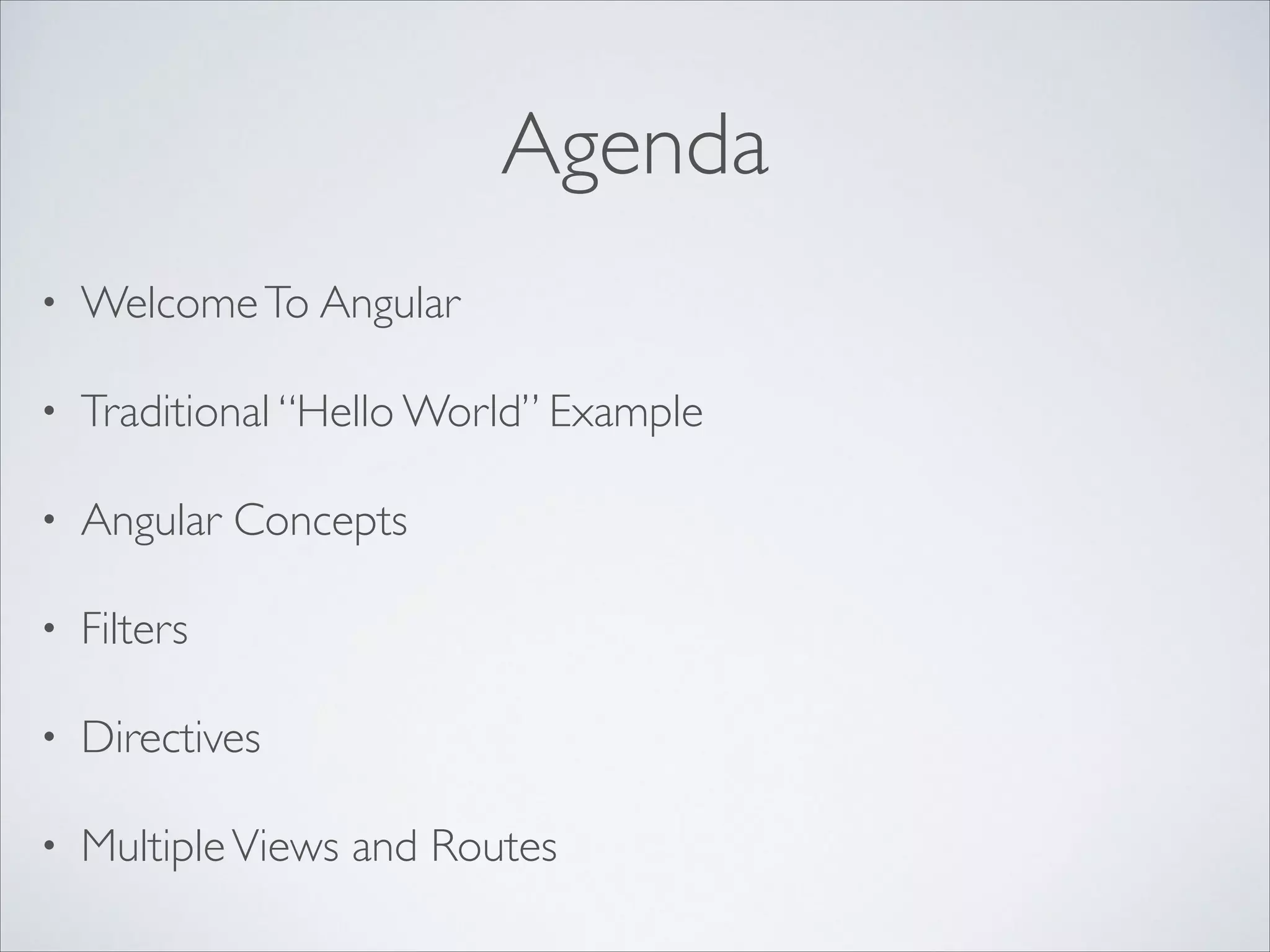


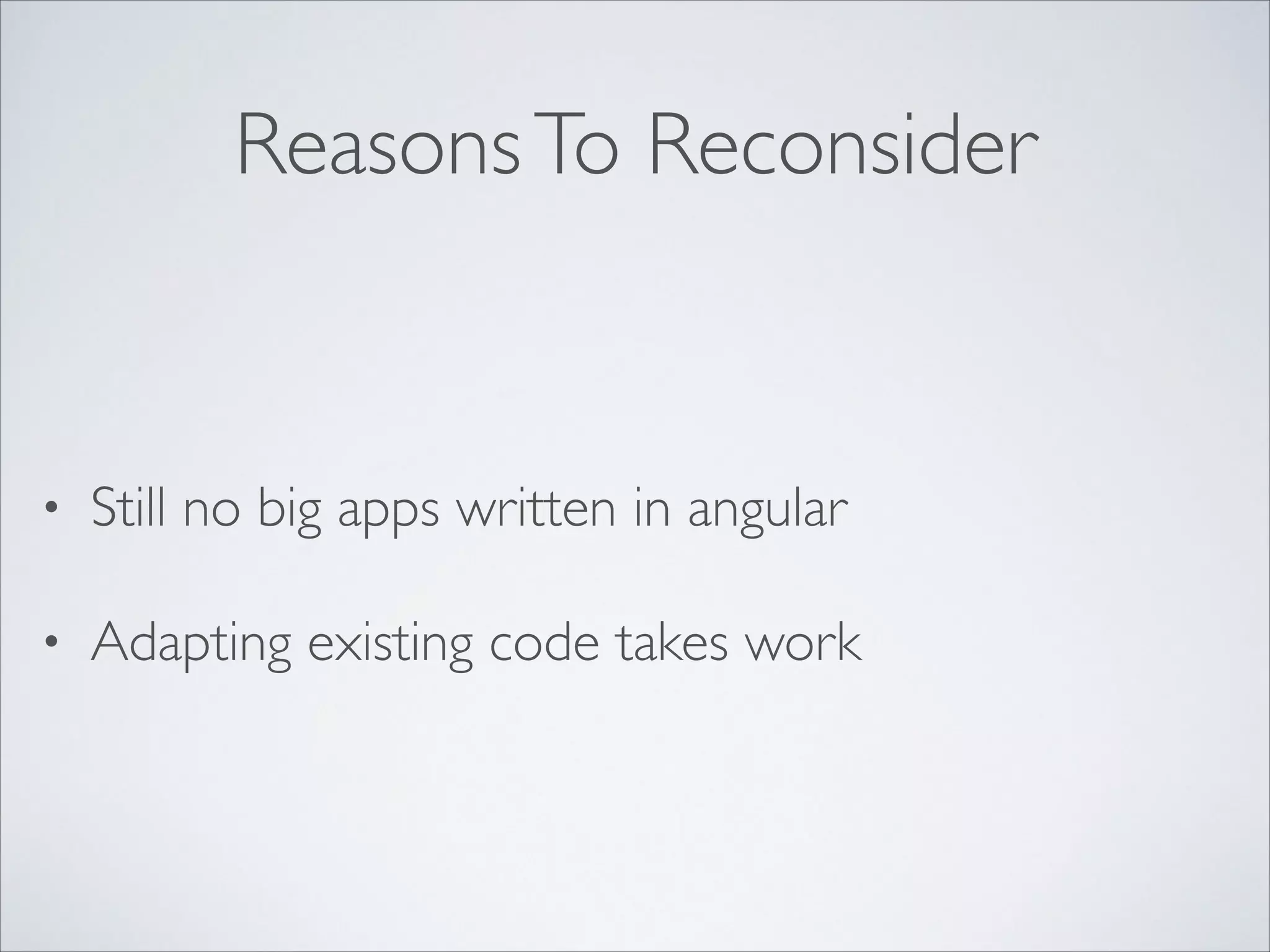

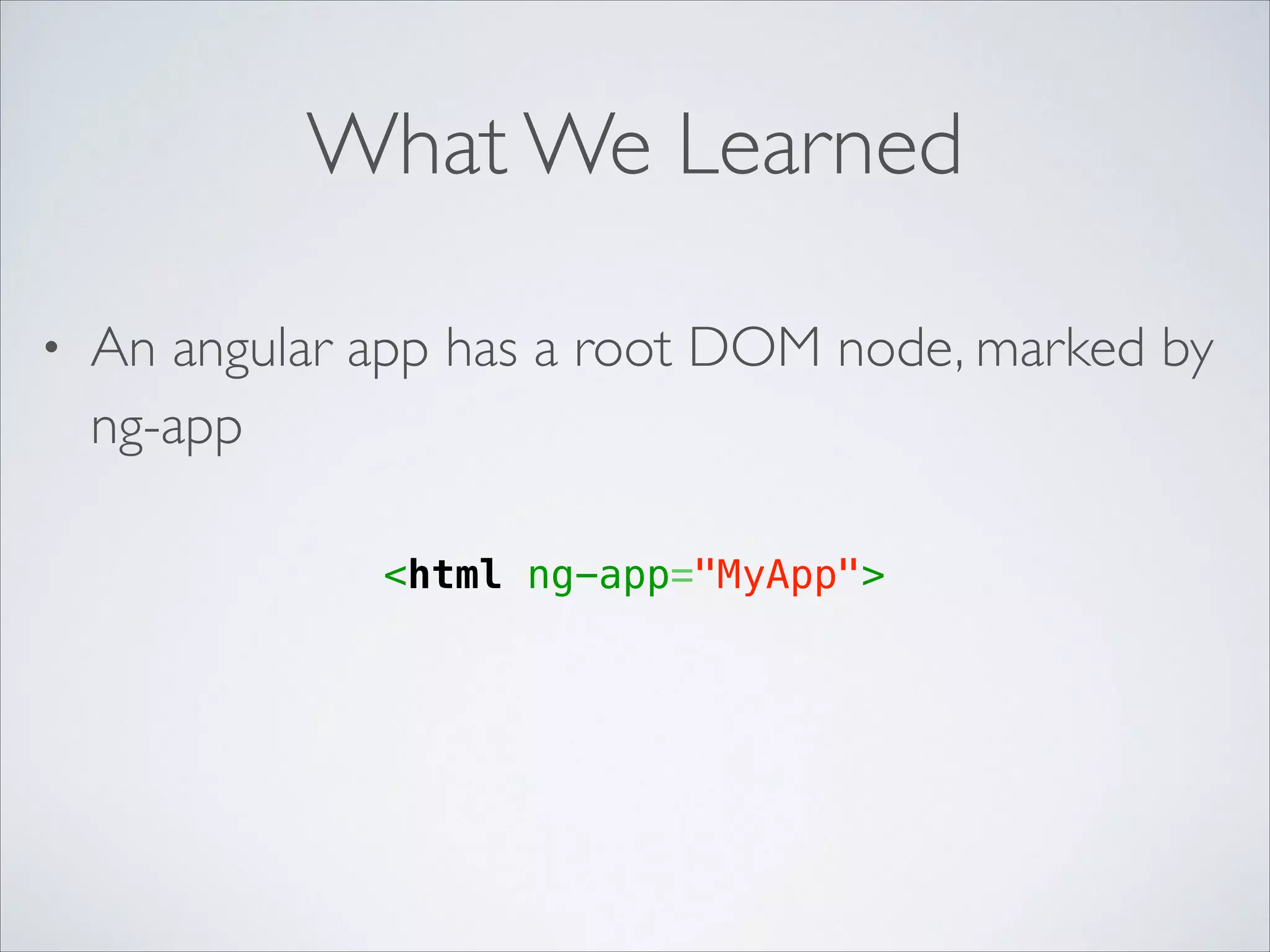
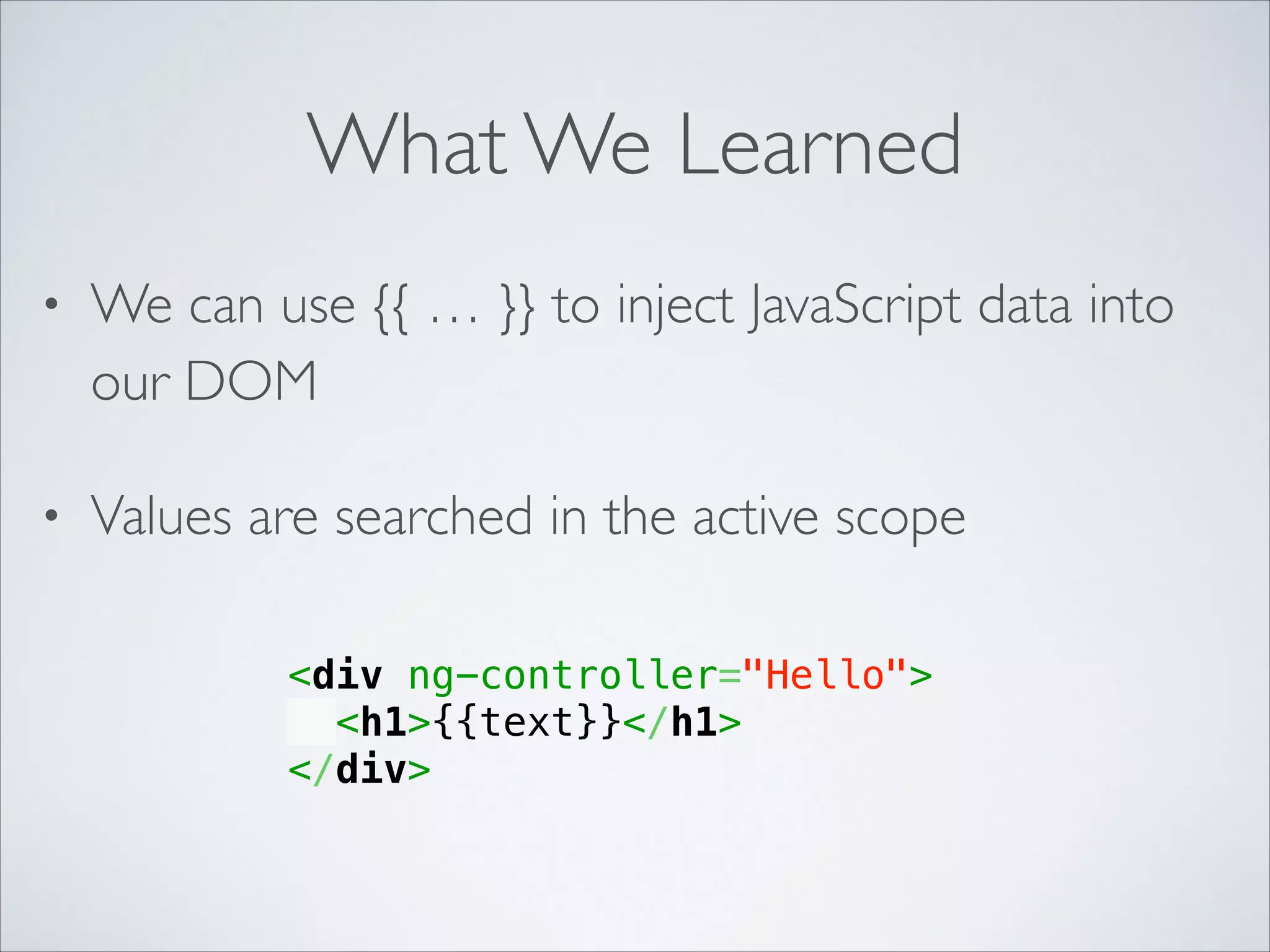


![What We Learned • We registered a controller factory using a special angular function. • Angular later creates the controller instance myApp.controller('Hello', ['$scope', function($scope) { $scope.text = 'Welcome To Angular'; }]);](https://image.slidesharecdn.com/angularjs-131106041531-phpapp01/75/Angularjs-11-2048.jpg)
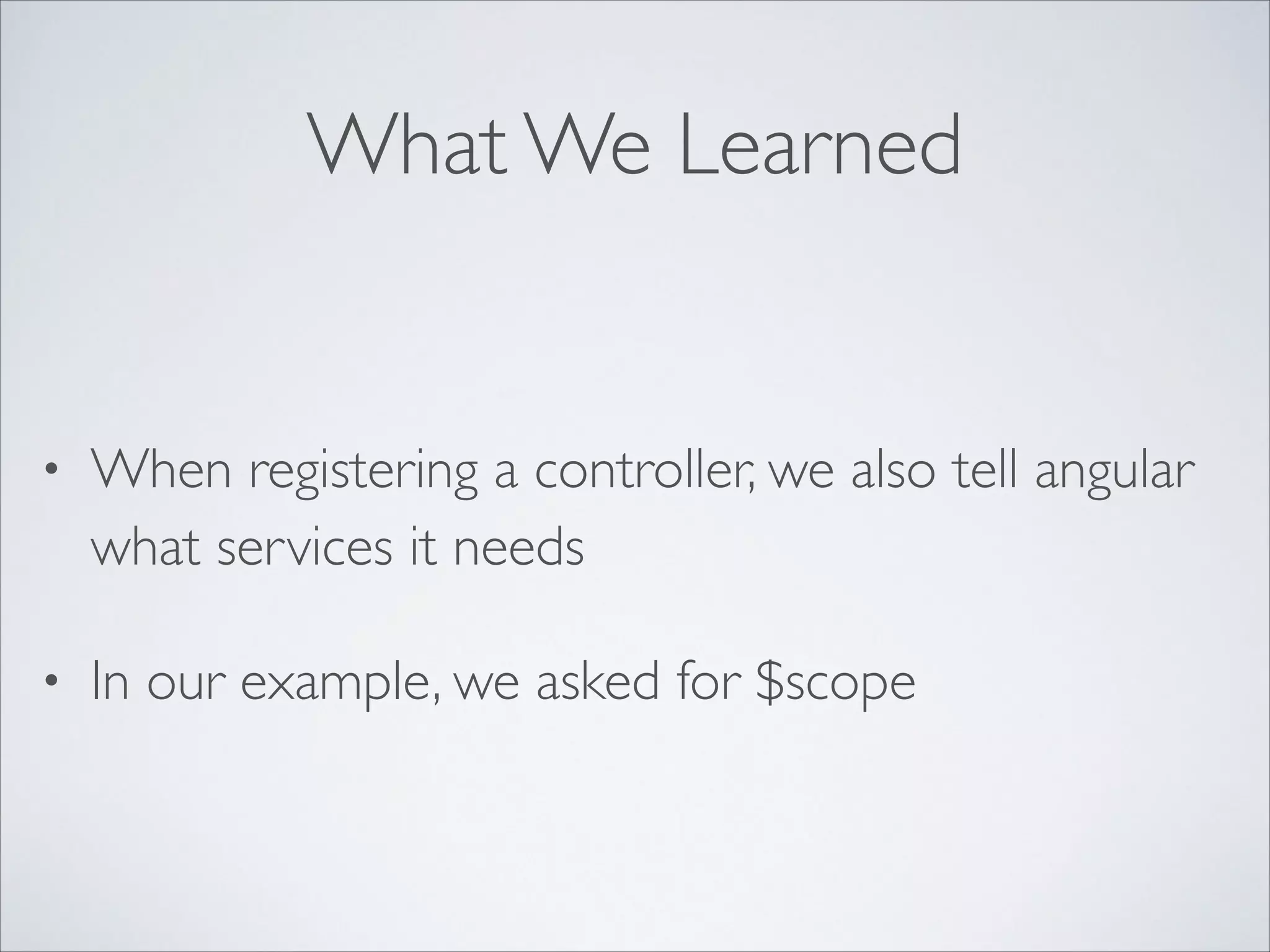
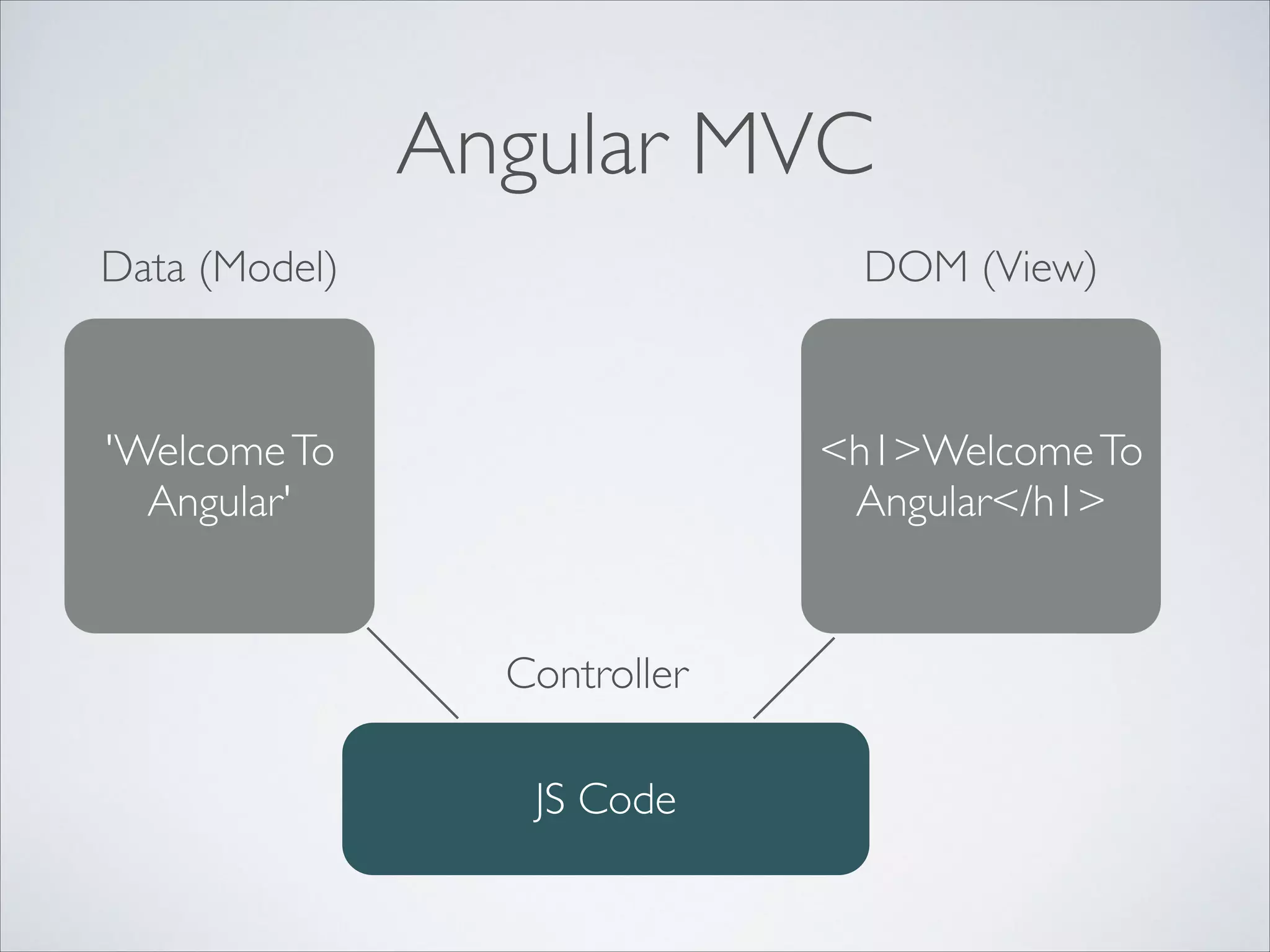


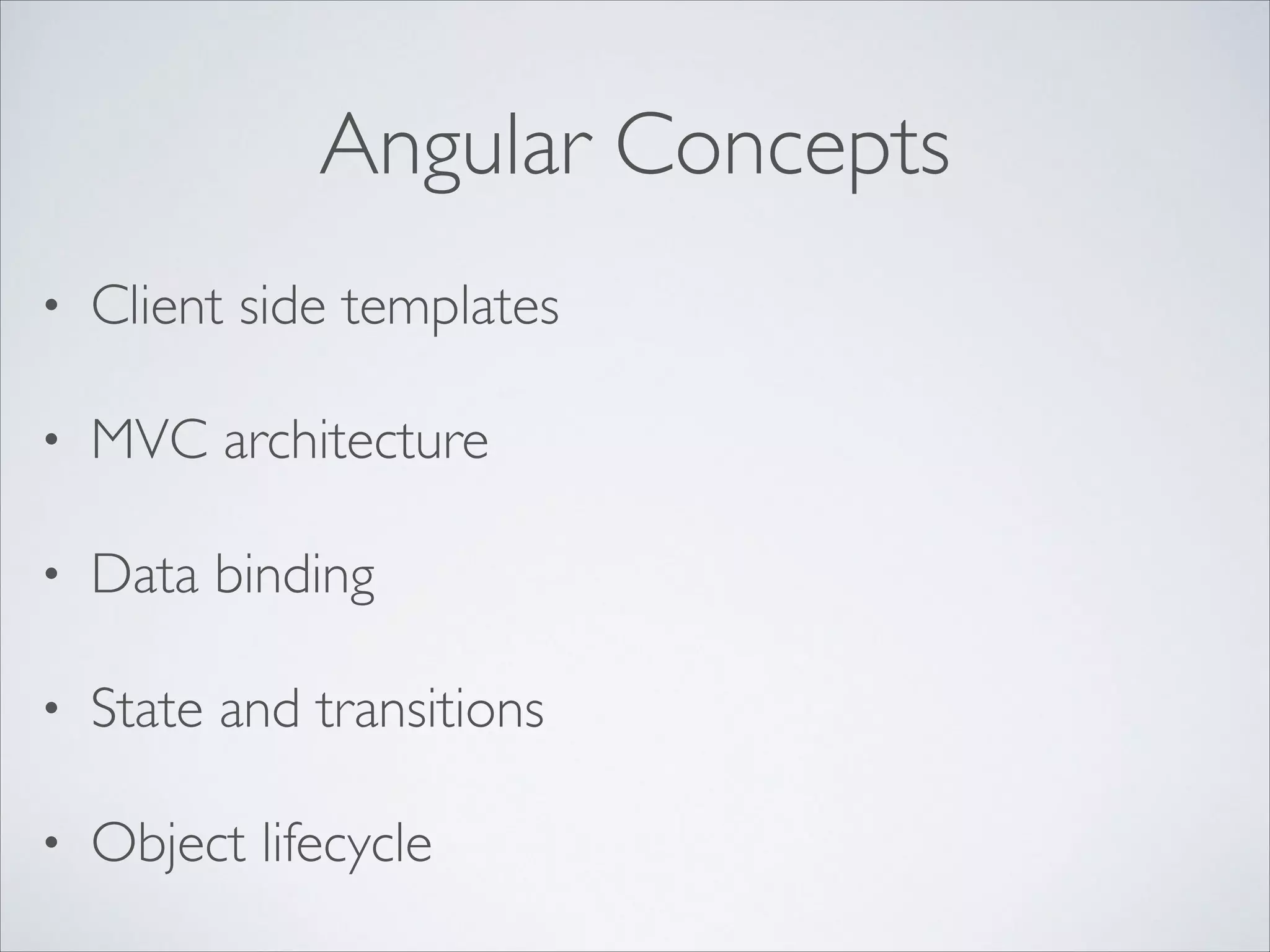
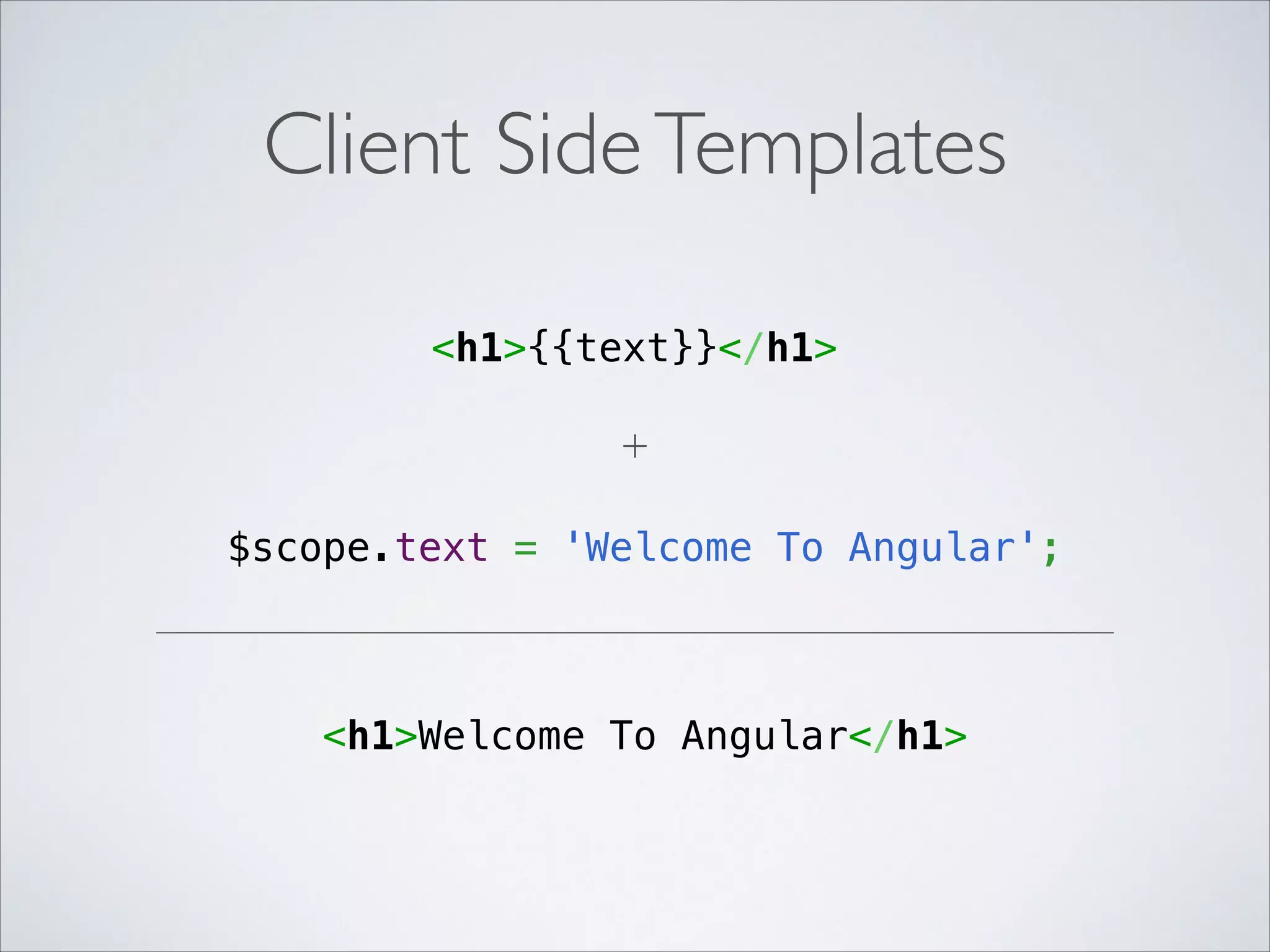
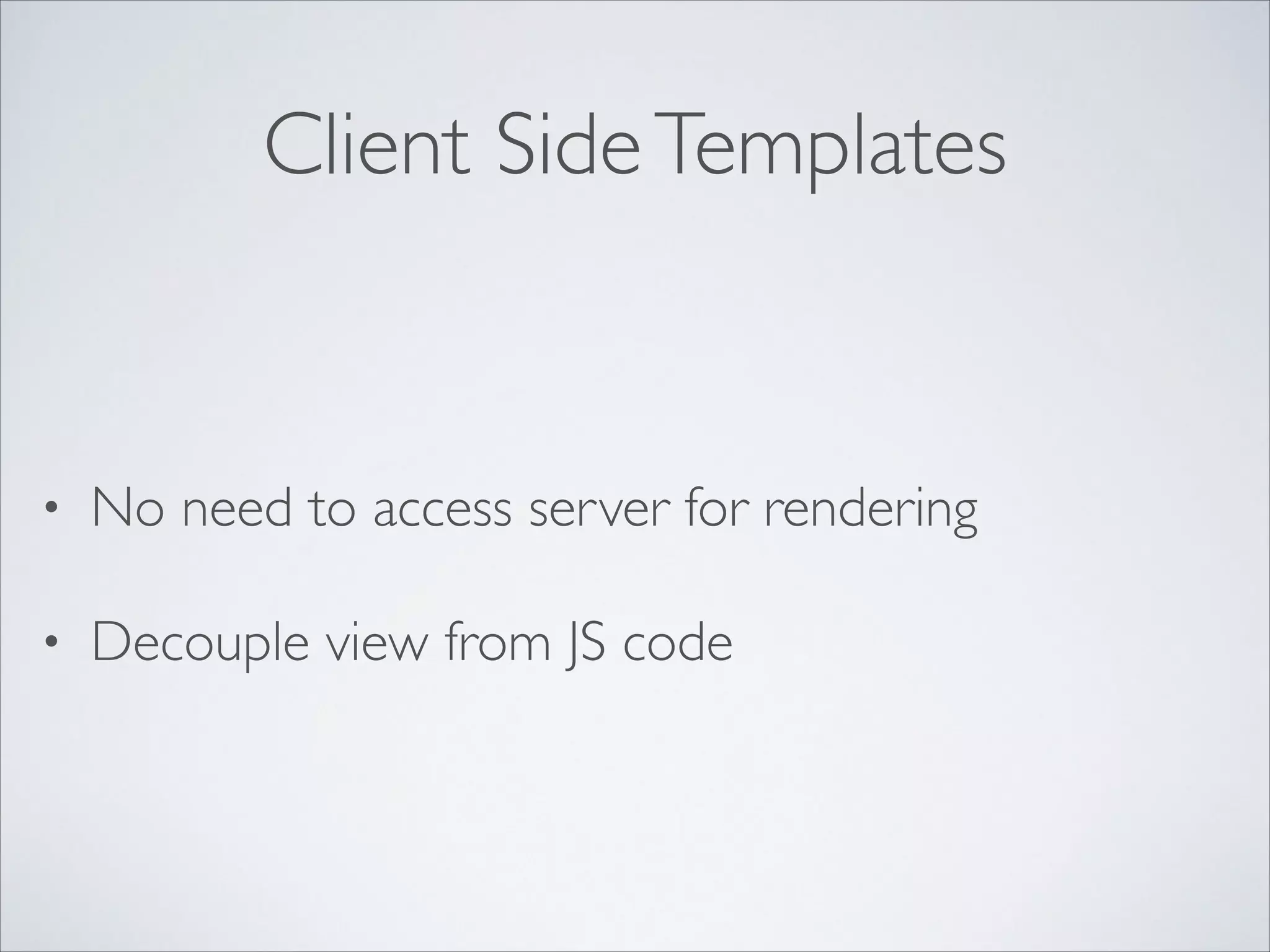

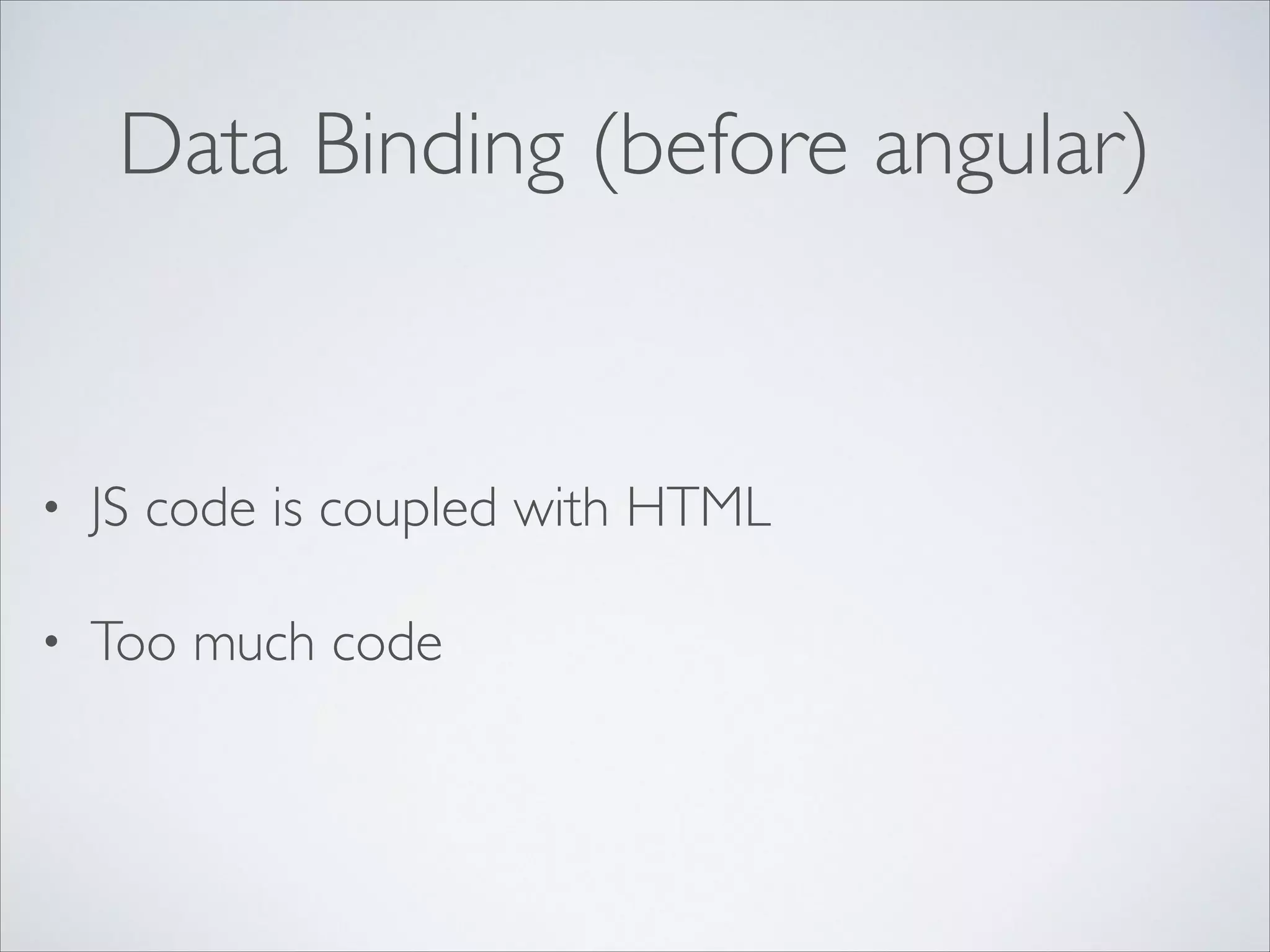
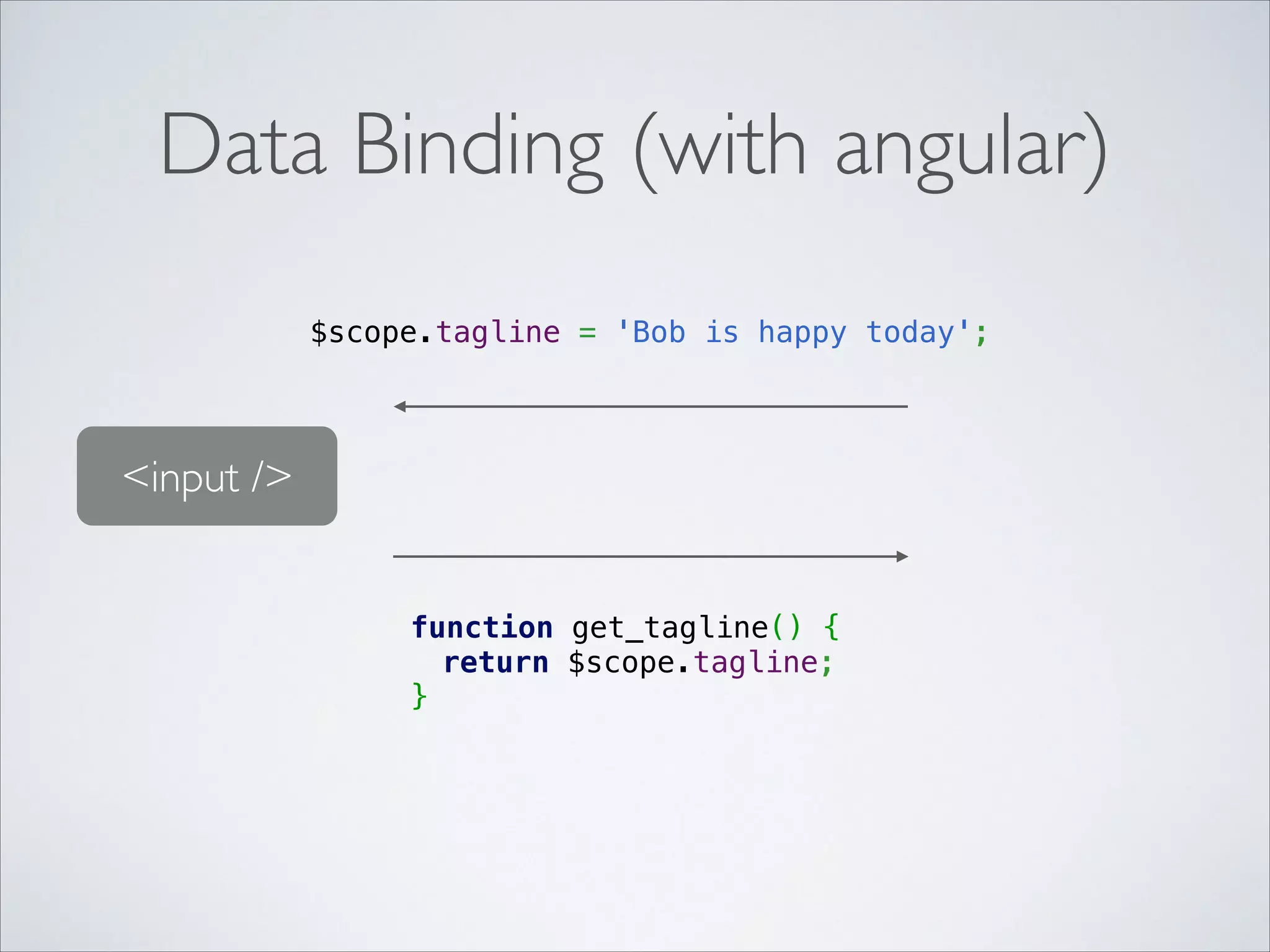
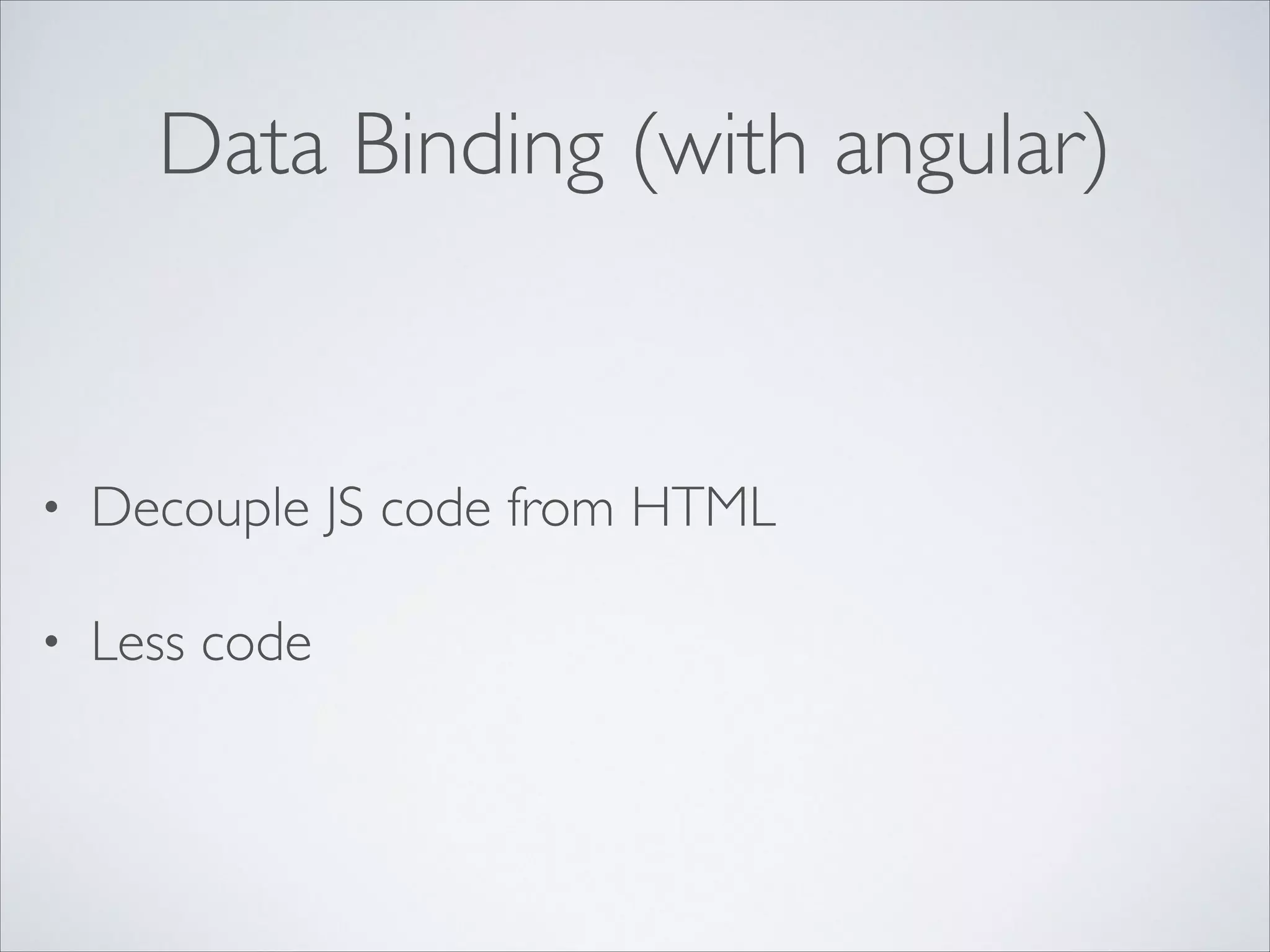



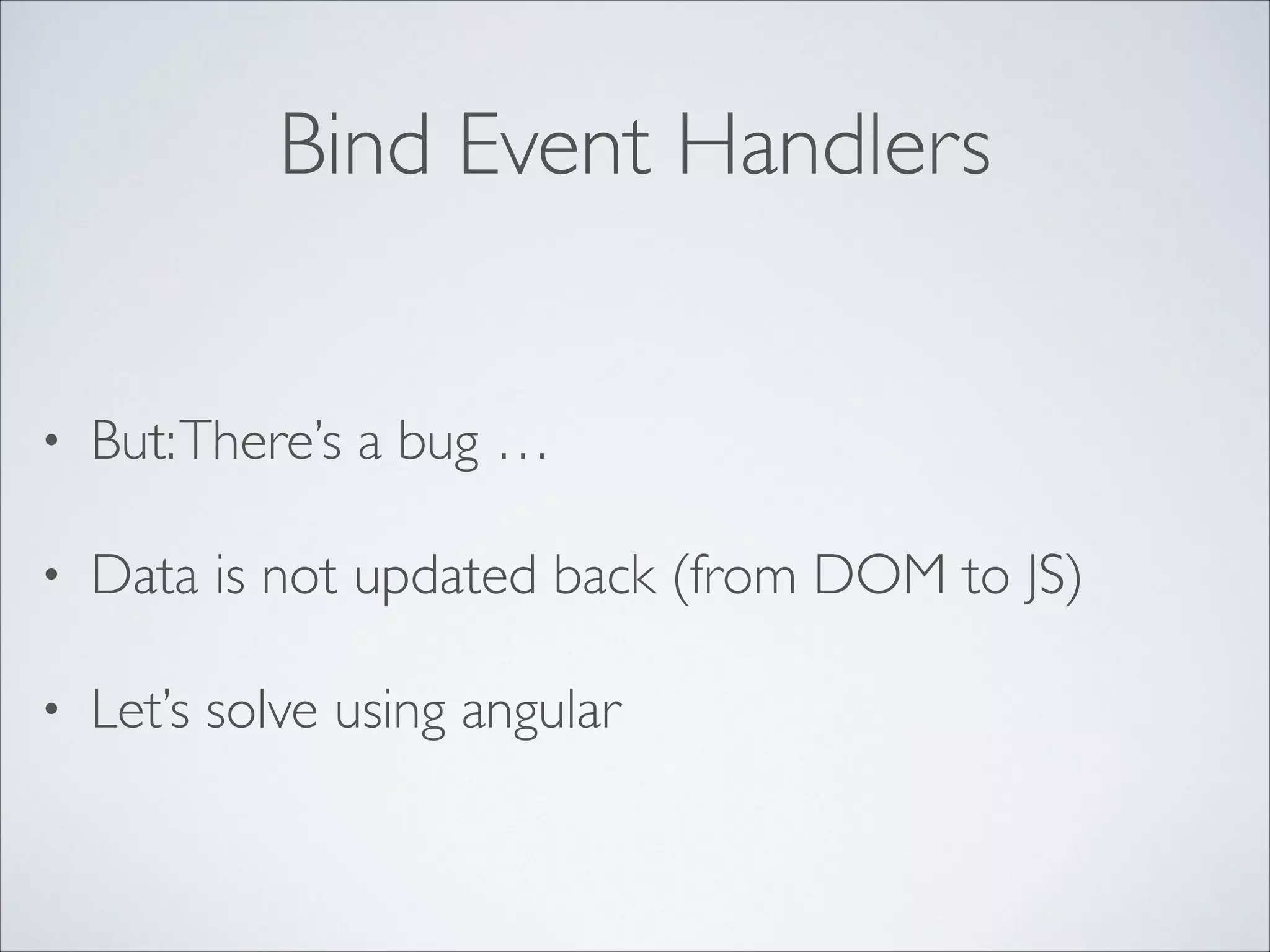
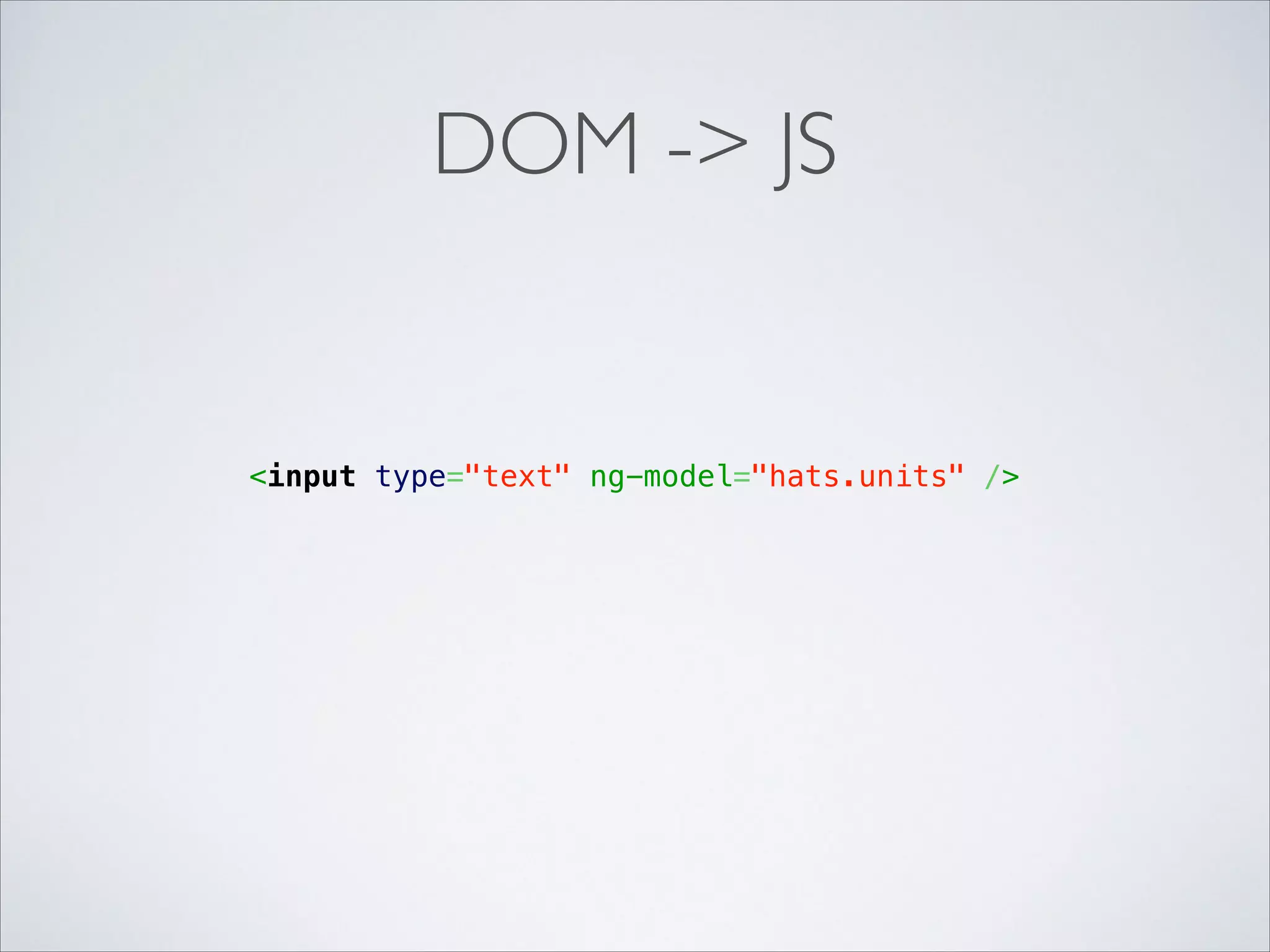




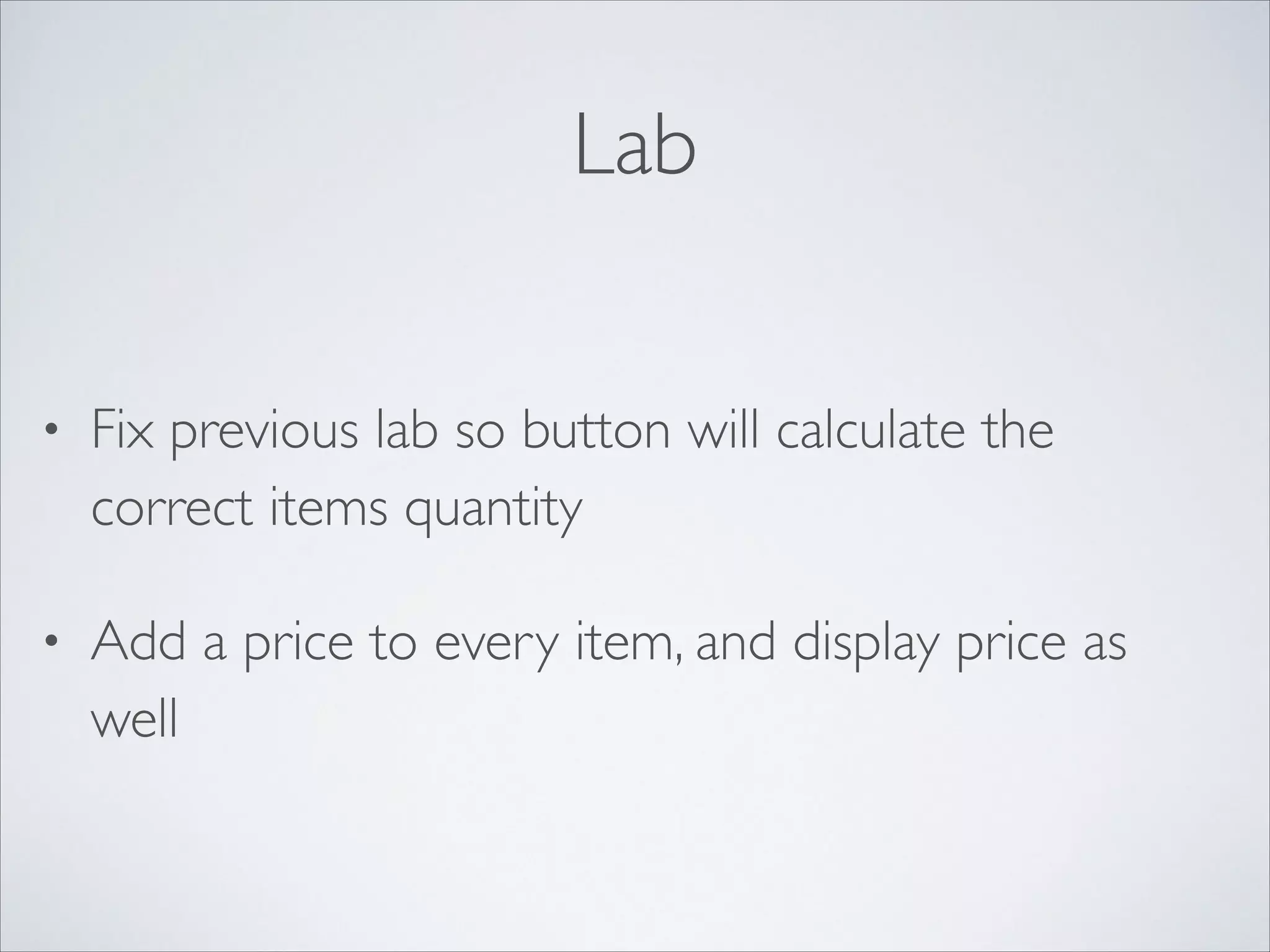


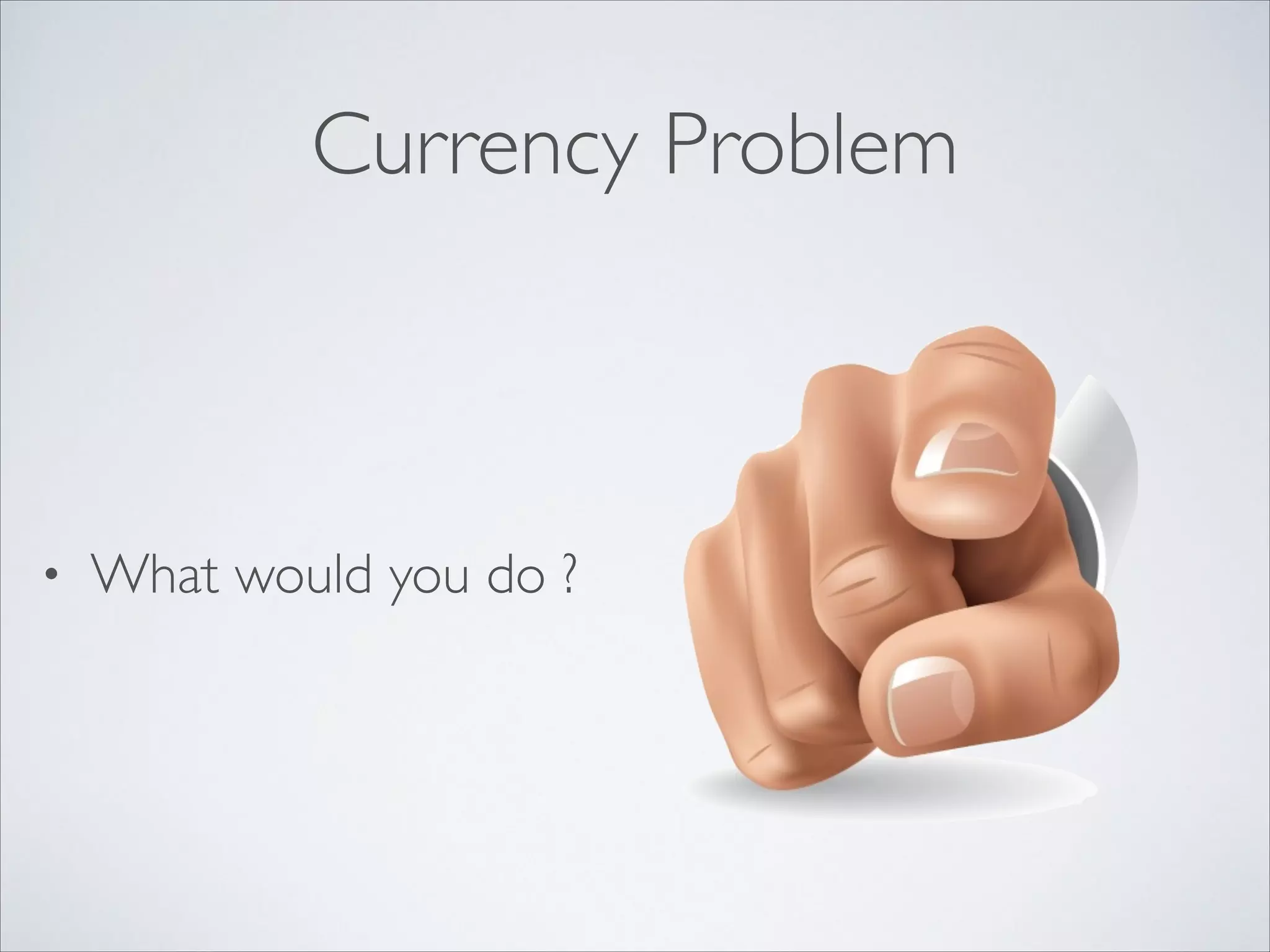


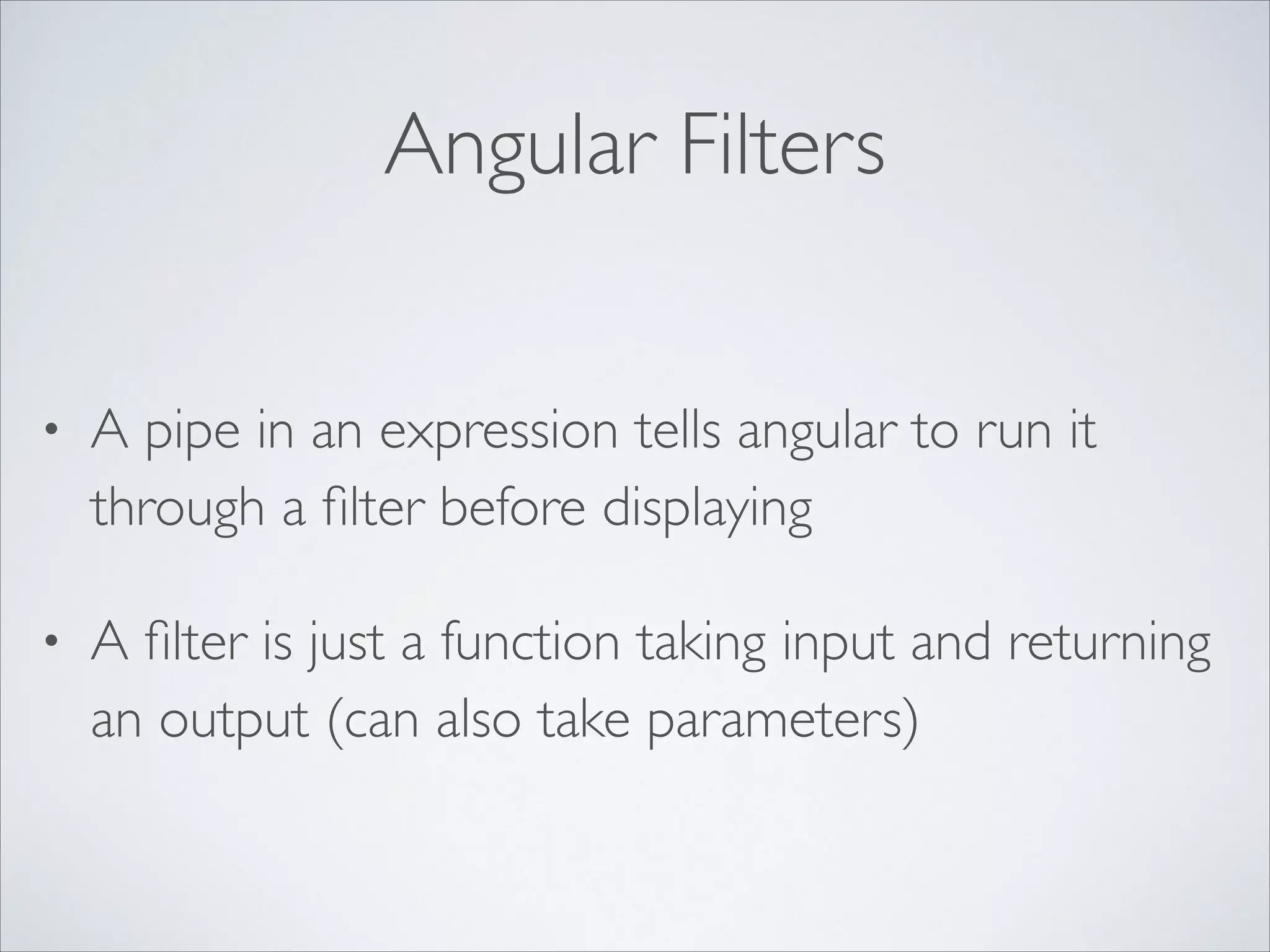
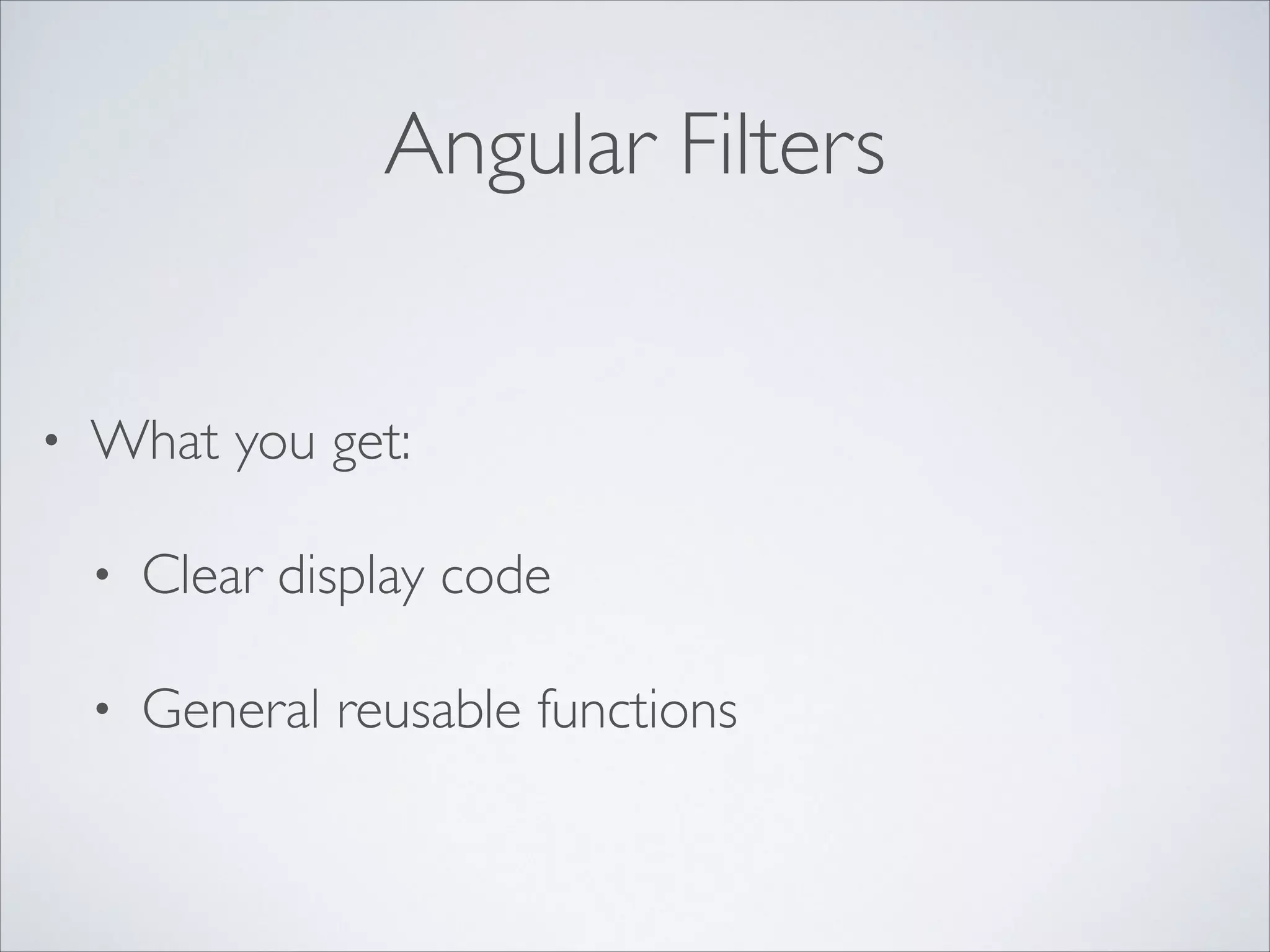

![Custom Filters 1. app.filter('longest', function() { 2. return function(input) { 3. 4. if ( input.length == 0 ) return ''; 5. 6. var result = input[0]; 7. for ( var i=1; i < input.length; i++ ) { 8. if ( input[i].length > result.length ) result = input[i]; 9. } 10. return result; 11. } 12.});](https://image.slidesharecdn.com/angularjs-131106041531-phpapp01/75/Angularjs-41-2048.jpg)


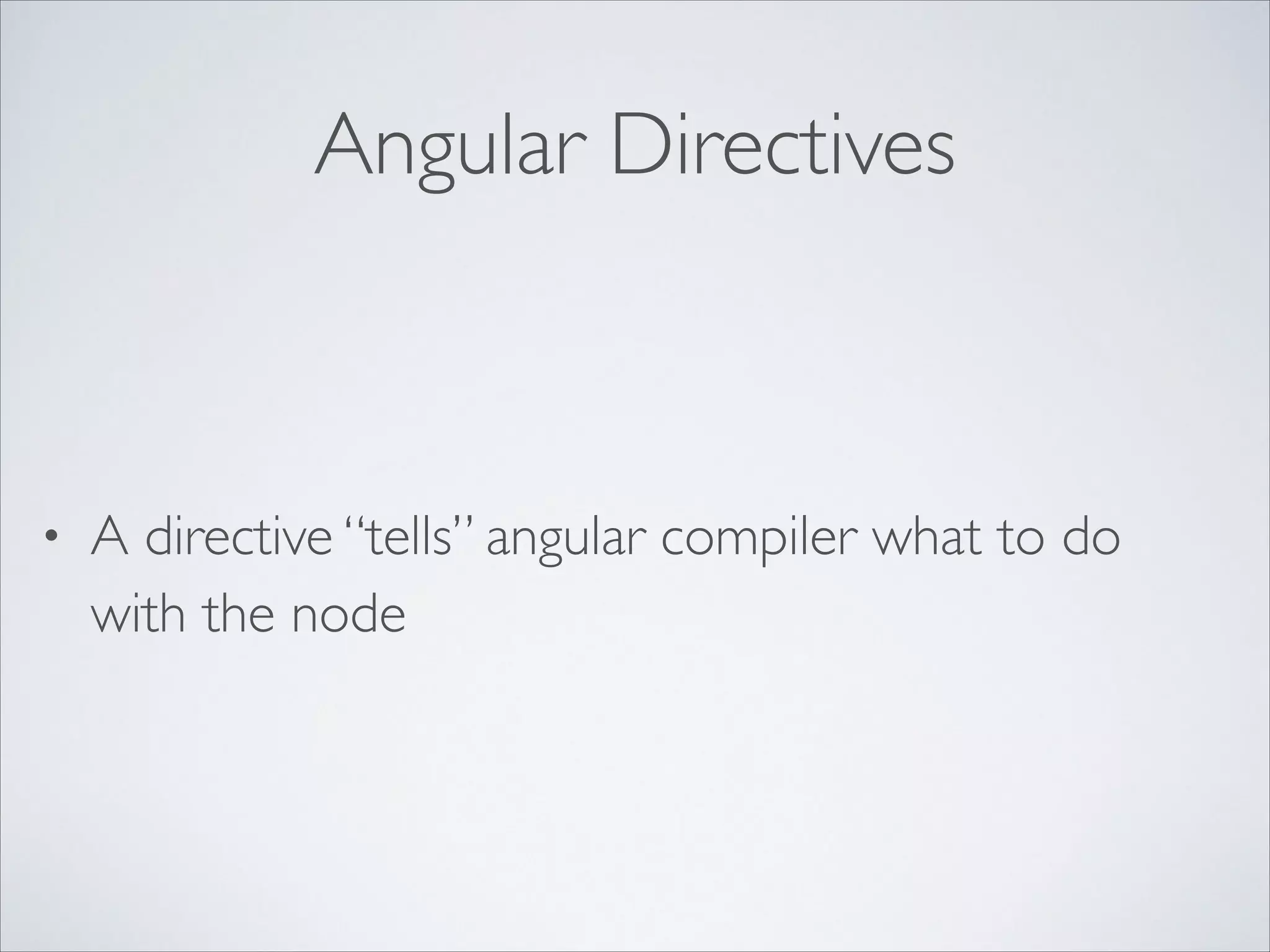
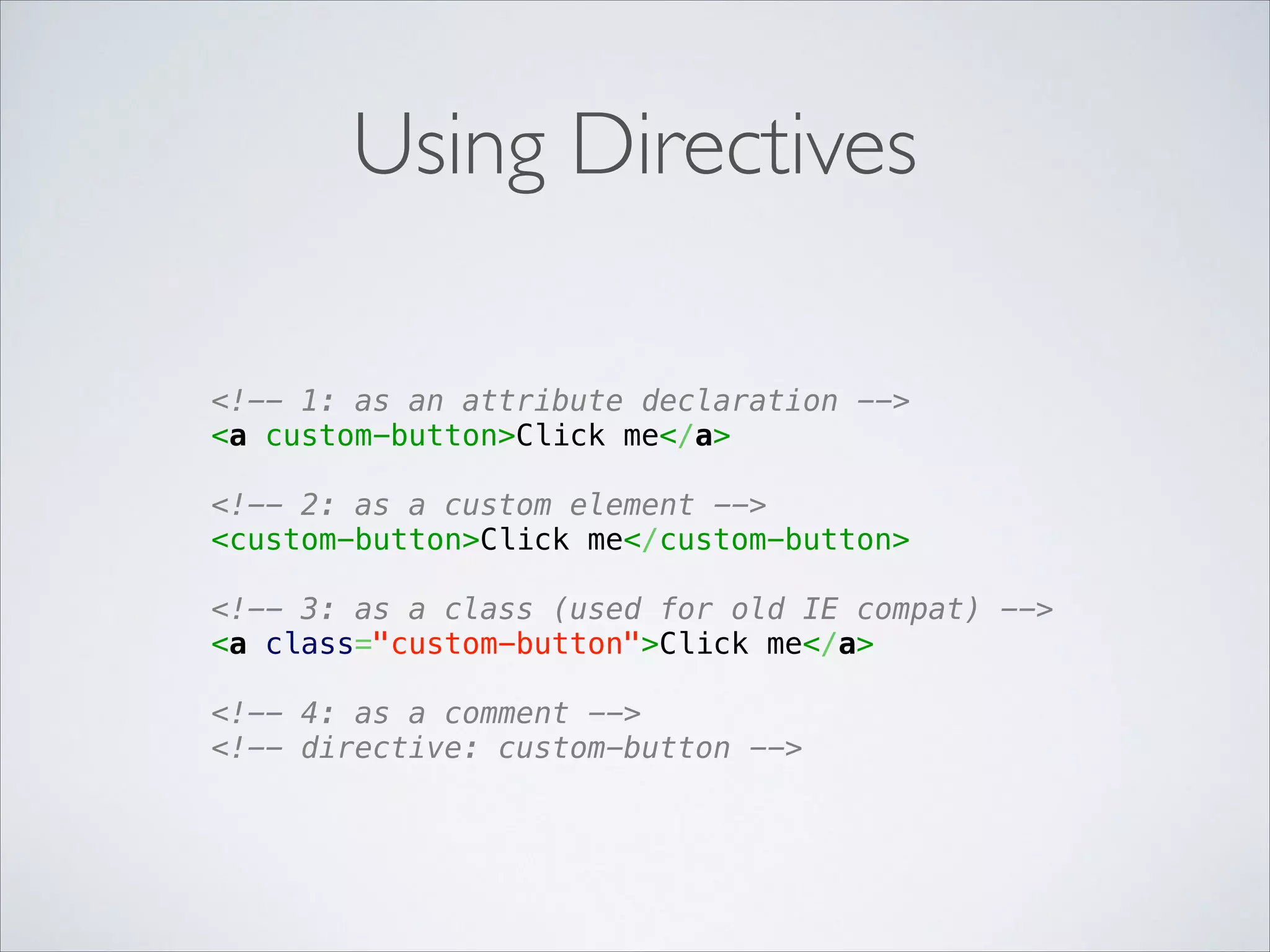
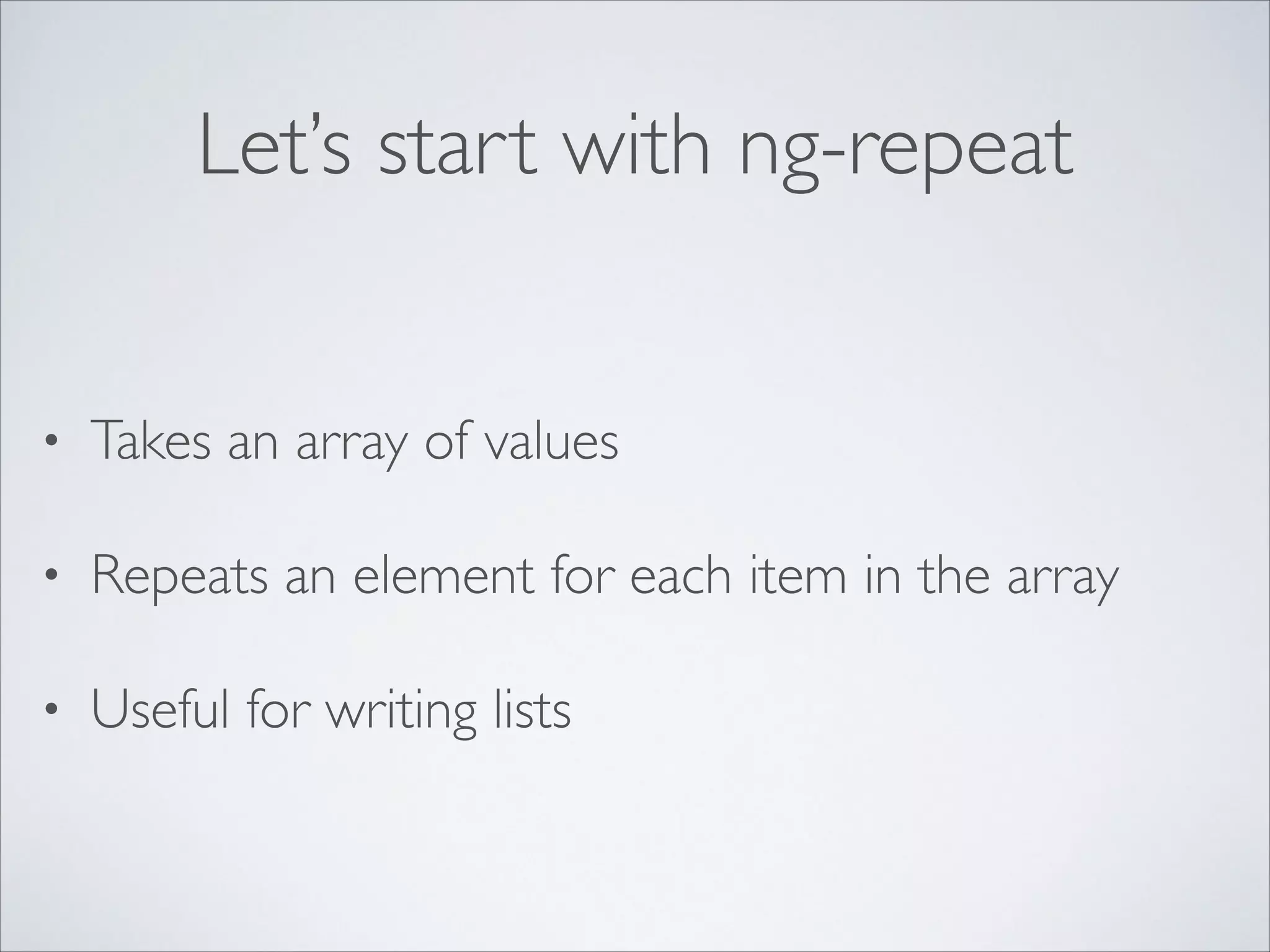


![Repeat + Filters = Win I have {{friends.length}} friends. They are: <input type="search" ng-model="q" placeholder="filter friends..." /> ! <ul class="example-animate-container"> <li class="animate-repeat" ng-repeat="friend in friends | filter:q"> [{{$index + 1}}] {{friend.name}} who is {{friend.age}} years old. </li> </ul> http://docs.angularjs.org/api/ng.directive:ngRepeat](https://image.slidesharecdn.com/angularjs-131106041531-phpapp01/75/Angularjs-49-2048.jpg)
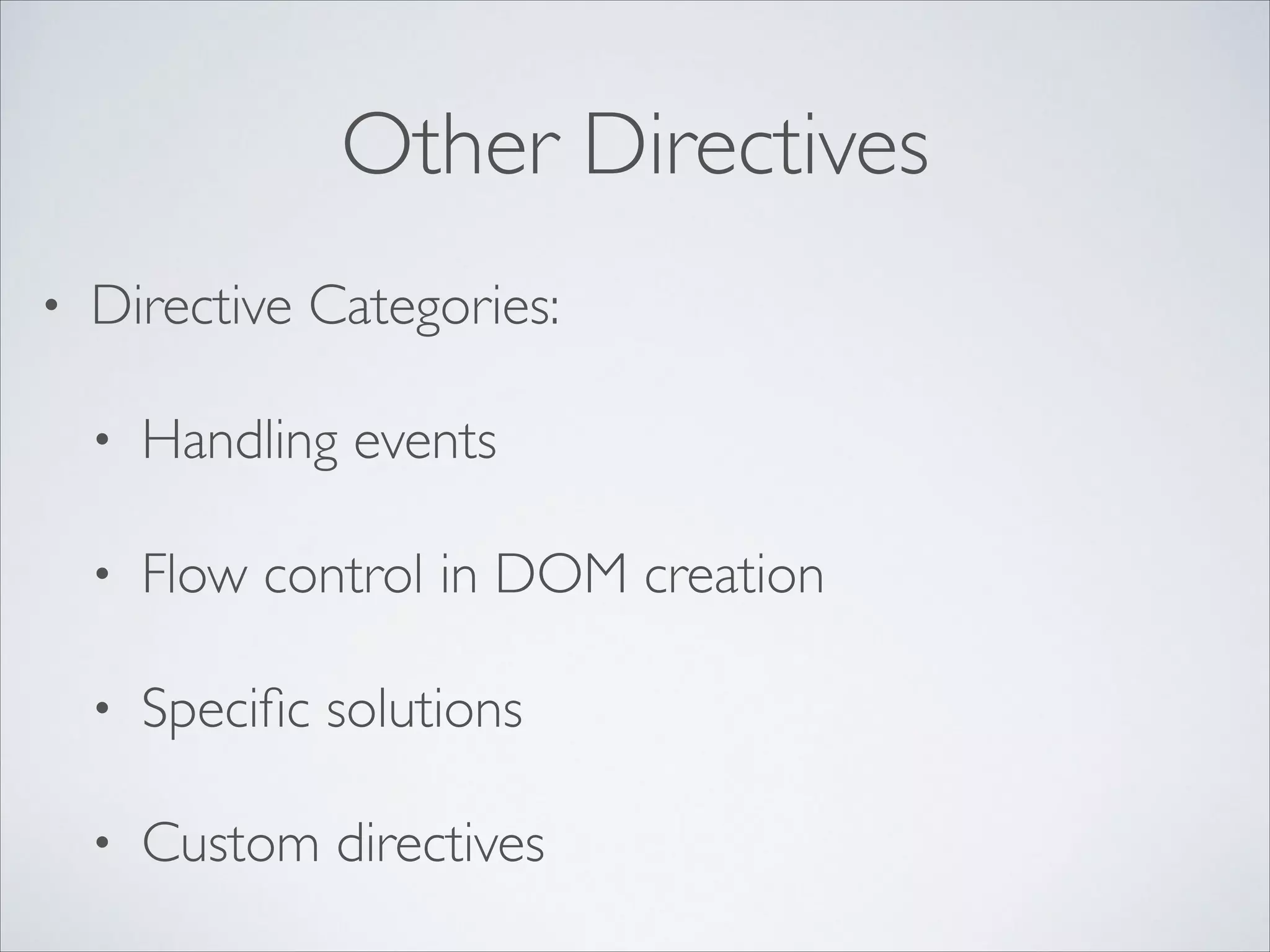
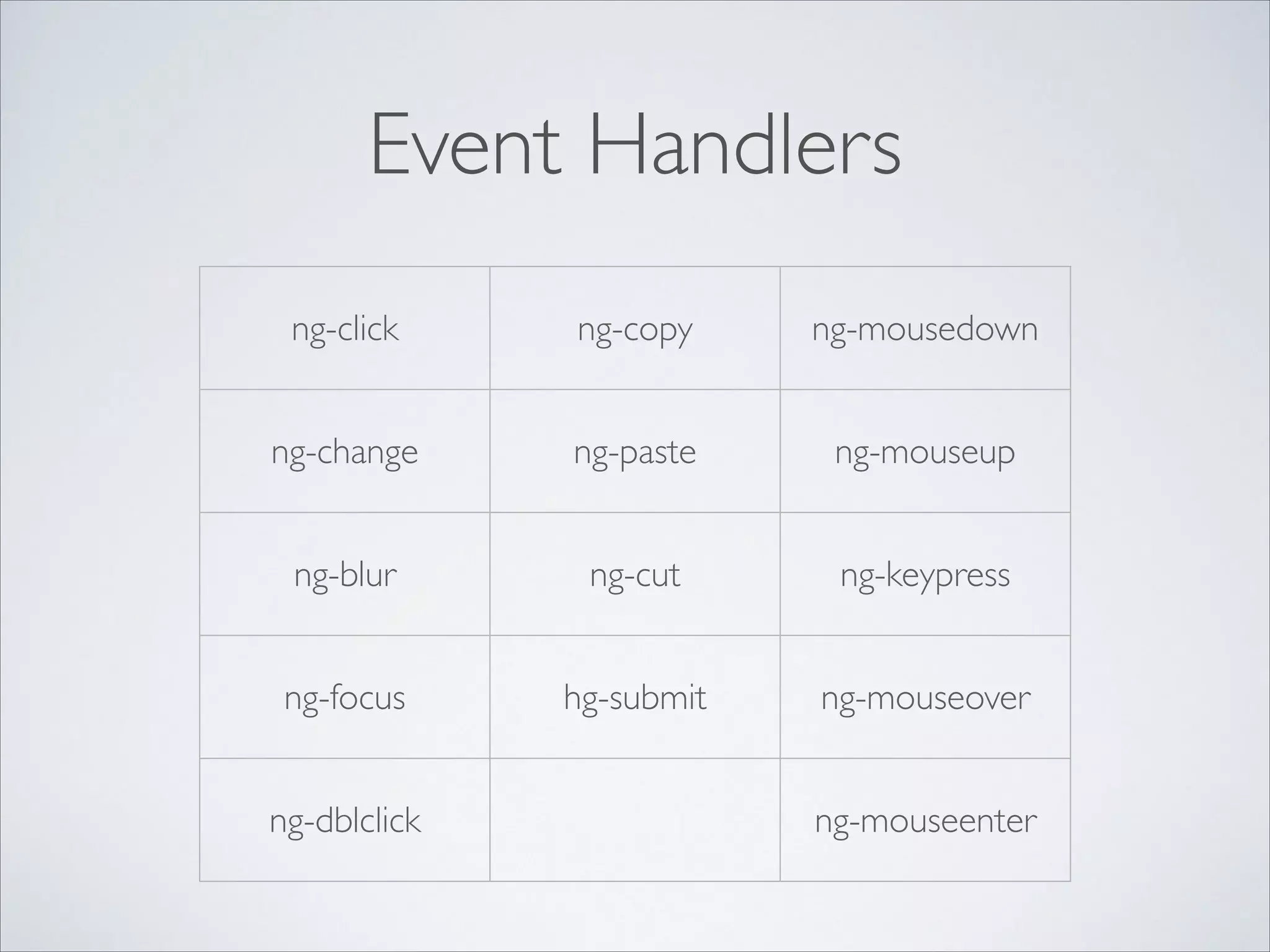

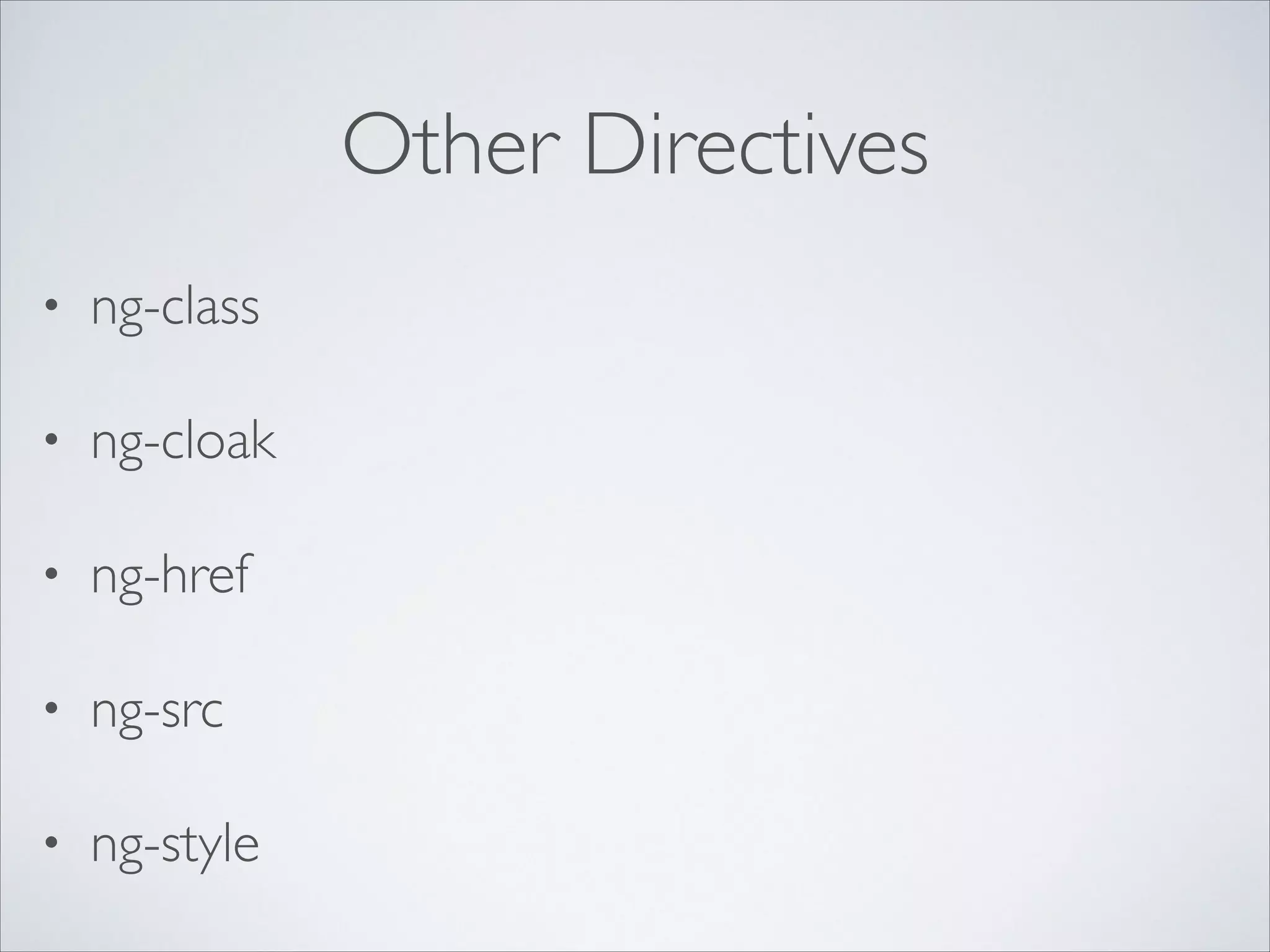

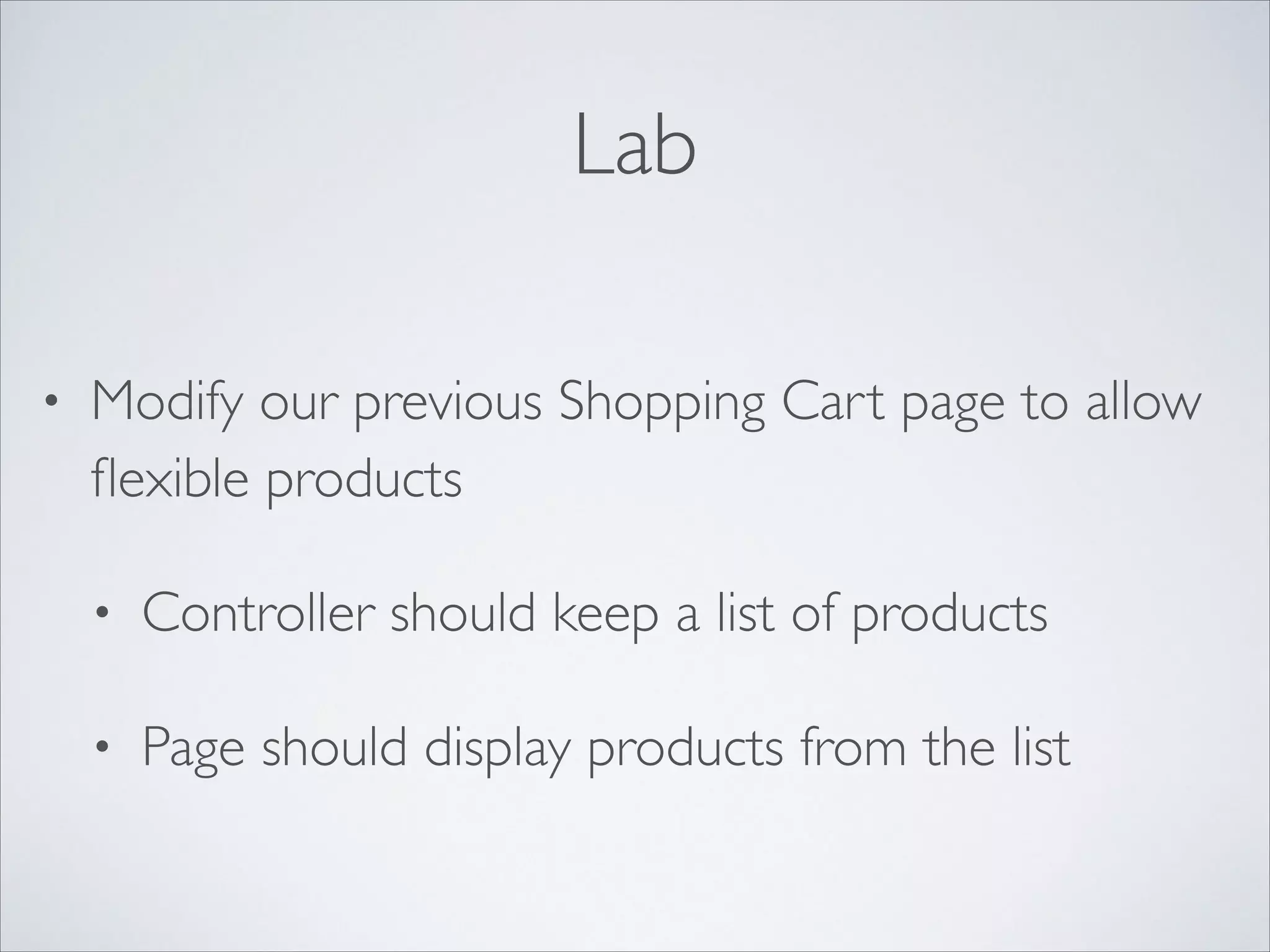
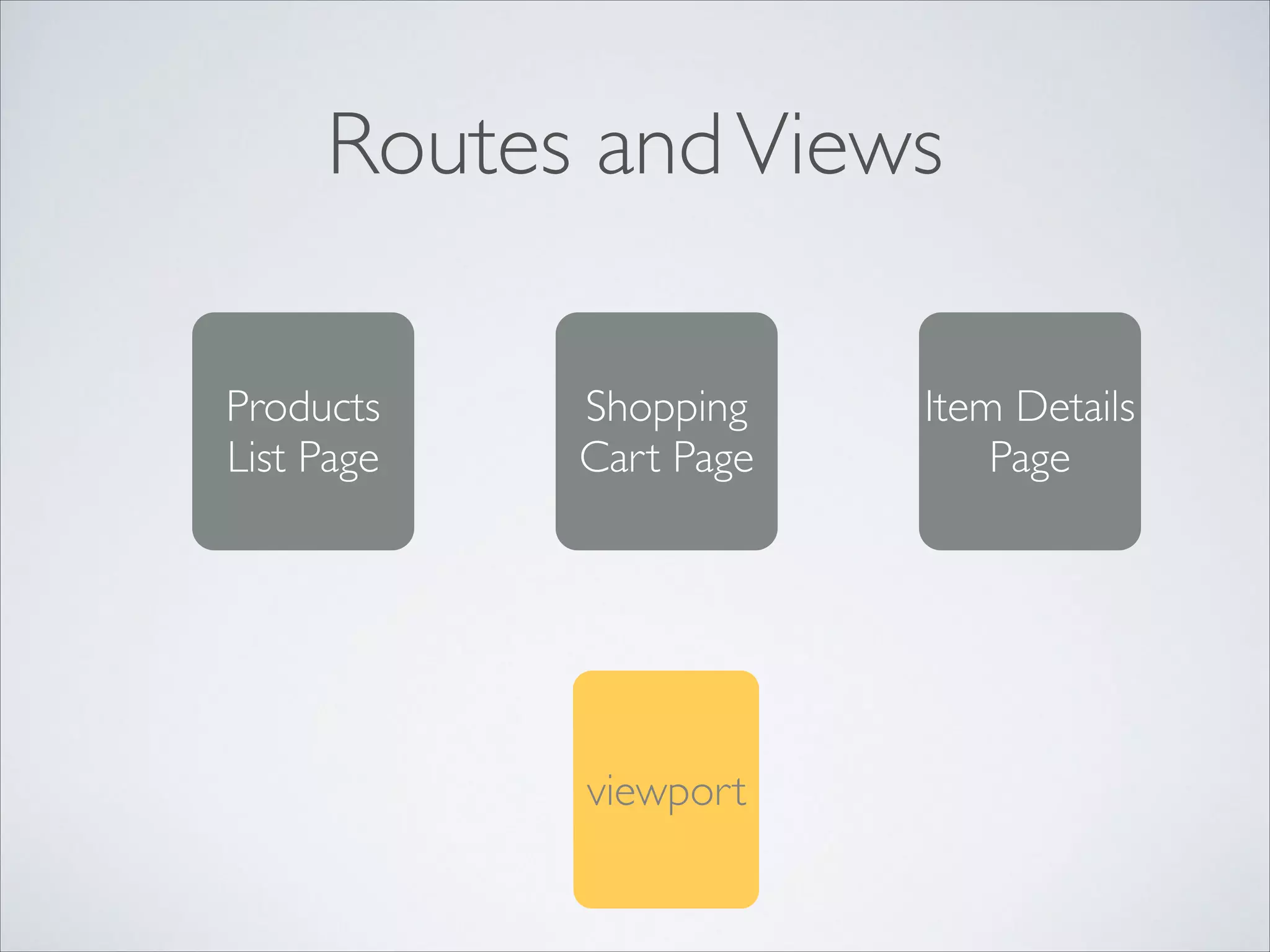


![Router Demo myApp.config(['$routeProvider', '$locationProvider', function($routes, $location) { $routes. when('/', { templateUrl: '/app/src/views/list.html', controller: 'ProductsList' }) .when('/item/:id', { templateUrl: '/app/src/views/details.html', controller: 'ProductDetails' }) .otherwise({ redirectTo: '/' }); $location.html5Mode(true); }]);](https://image.slidesharecdn.com/angularjs-131106041531-phpapp01/75/Angularjs-59-2048.jpg)
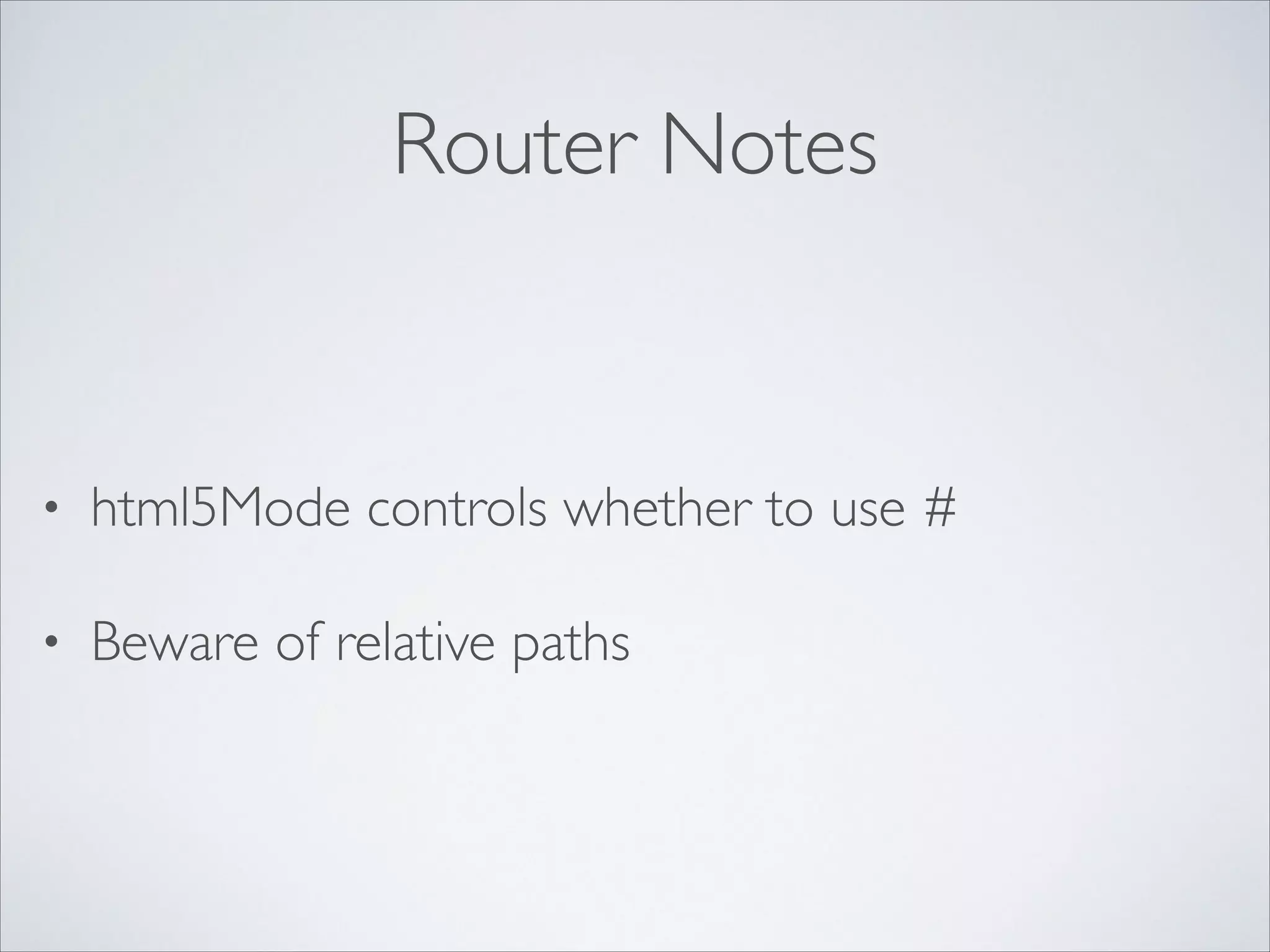
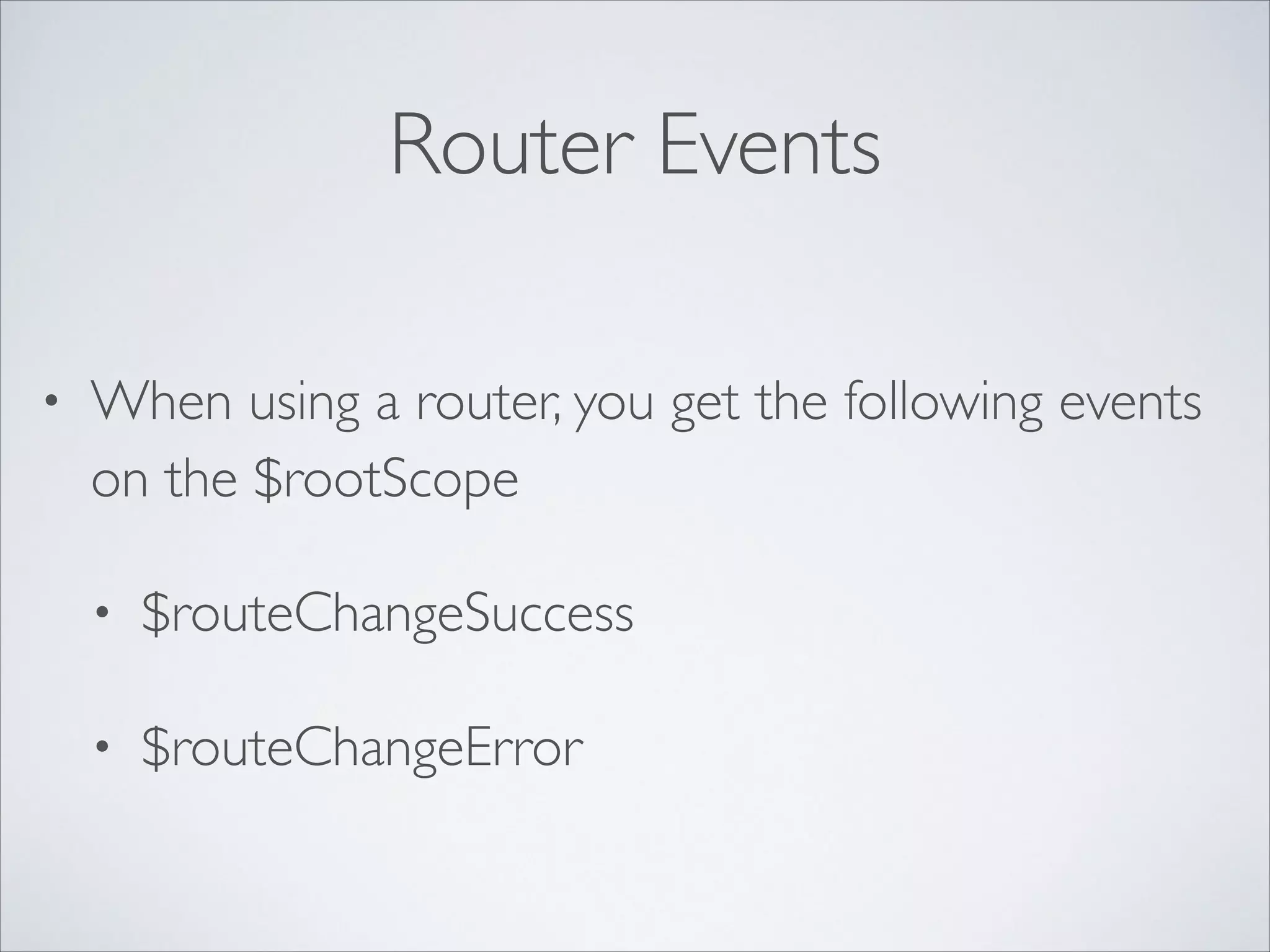
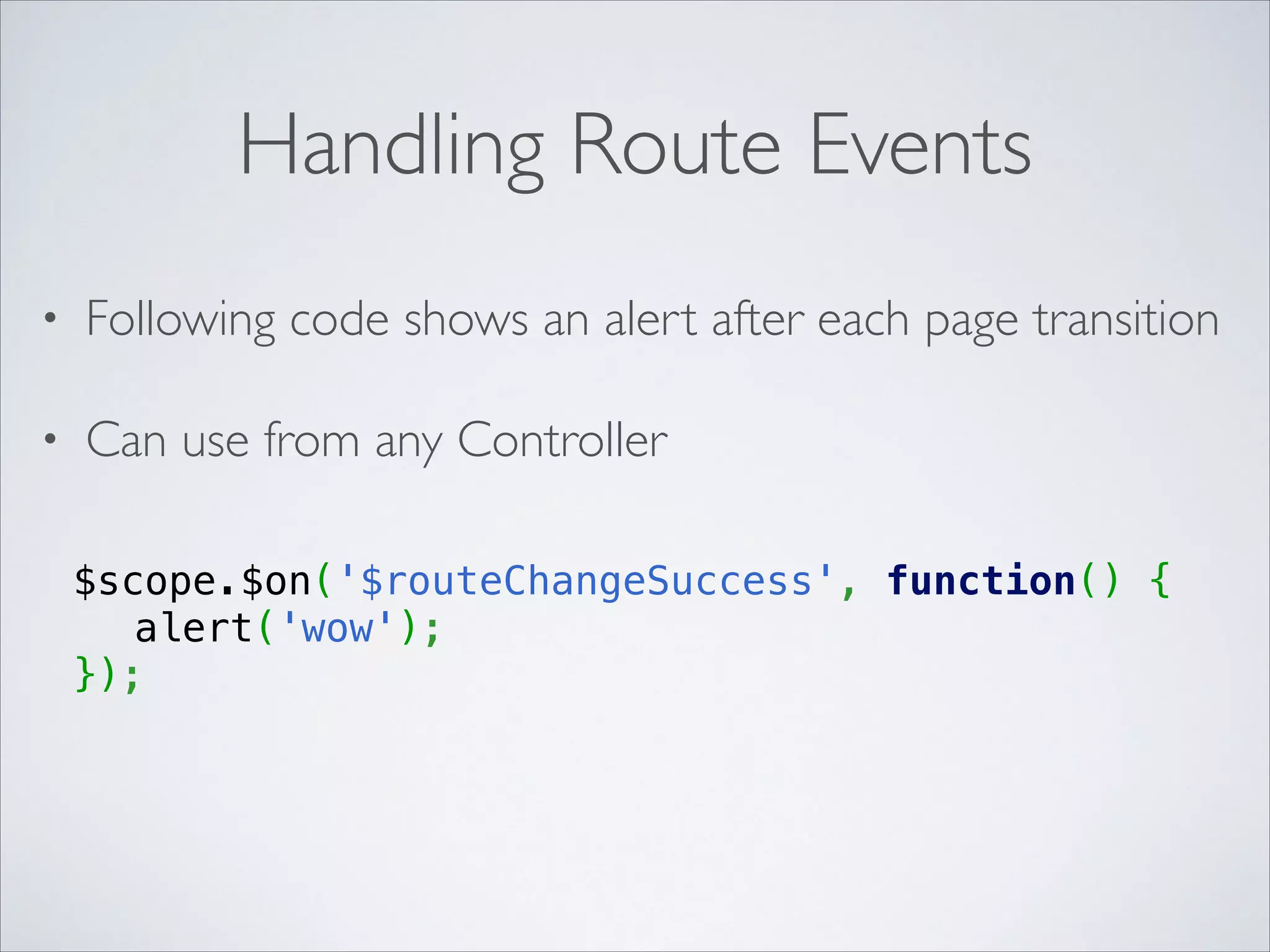
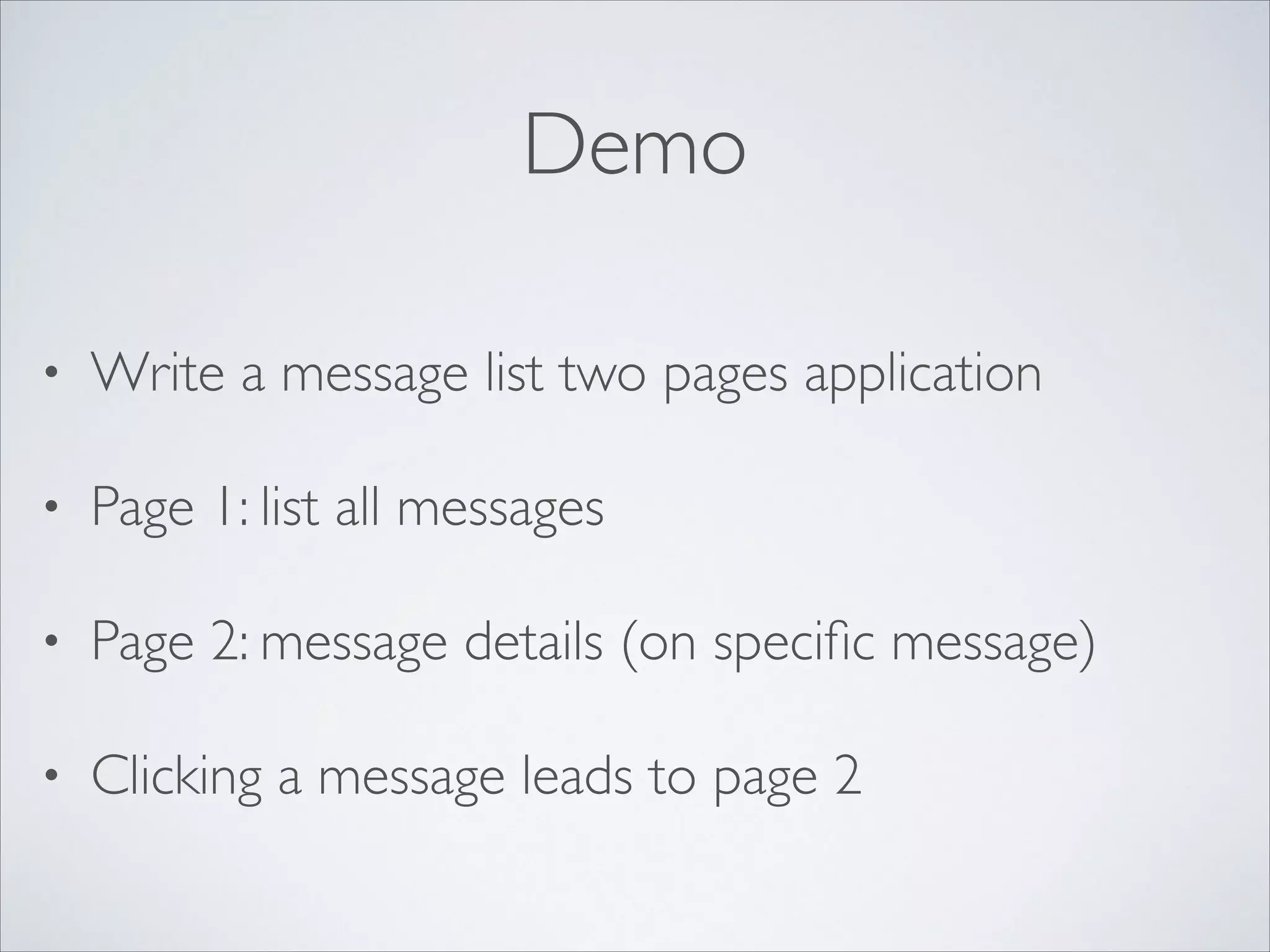




![Given The User List Code <div ng-controller="users">
<ul>
<li ng-repeat="u in users">
<a>{{u.name}}</a>
</li>
</ul>
</div> app.controller('users', ['$scope', function($scope) {
$scope.users = [
{ name: 'bob' },
{ name: 'john' },
{ name: 'brad' }
];
}]);](https://image.slidesharecdn.com/angularjs-131106041531-phpapp01/75/Angularjs-68-2048.jpg)
![Getting Data From Server app.controller('users', ['$scope', '$http', function($scope, $http) {
$http.get('/users.json')
.success(function(data, status) {
$scope.users = data;
});
}]);](https://image.slidesharecdn.com/angularjs-131106041531-phpapp01/75/Angularjs-69-2048.jpg)
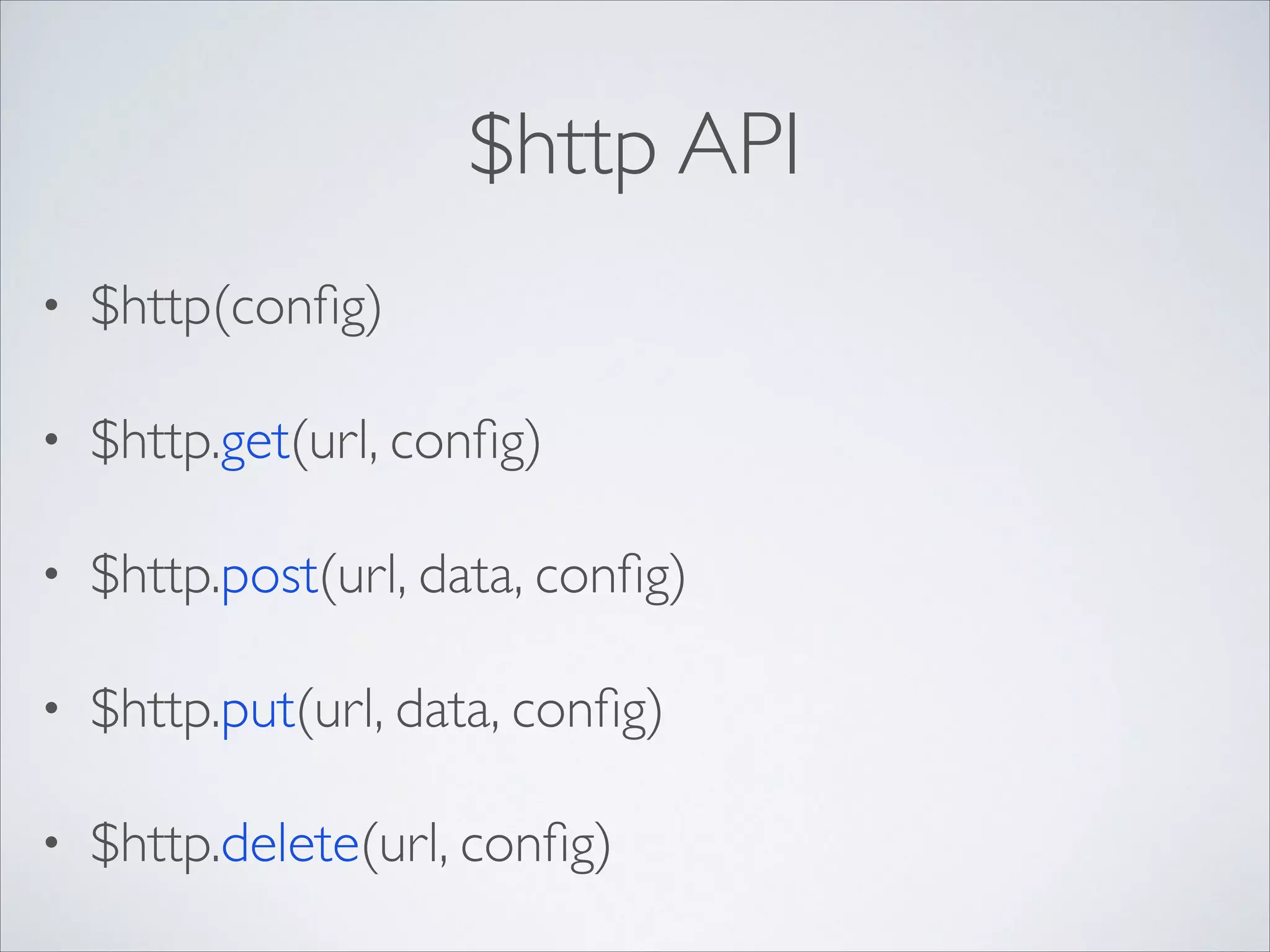
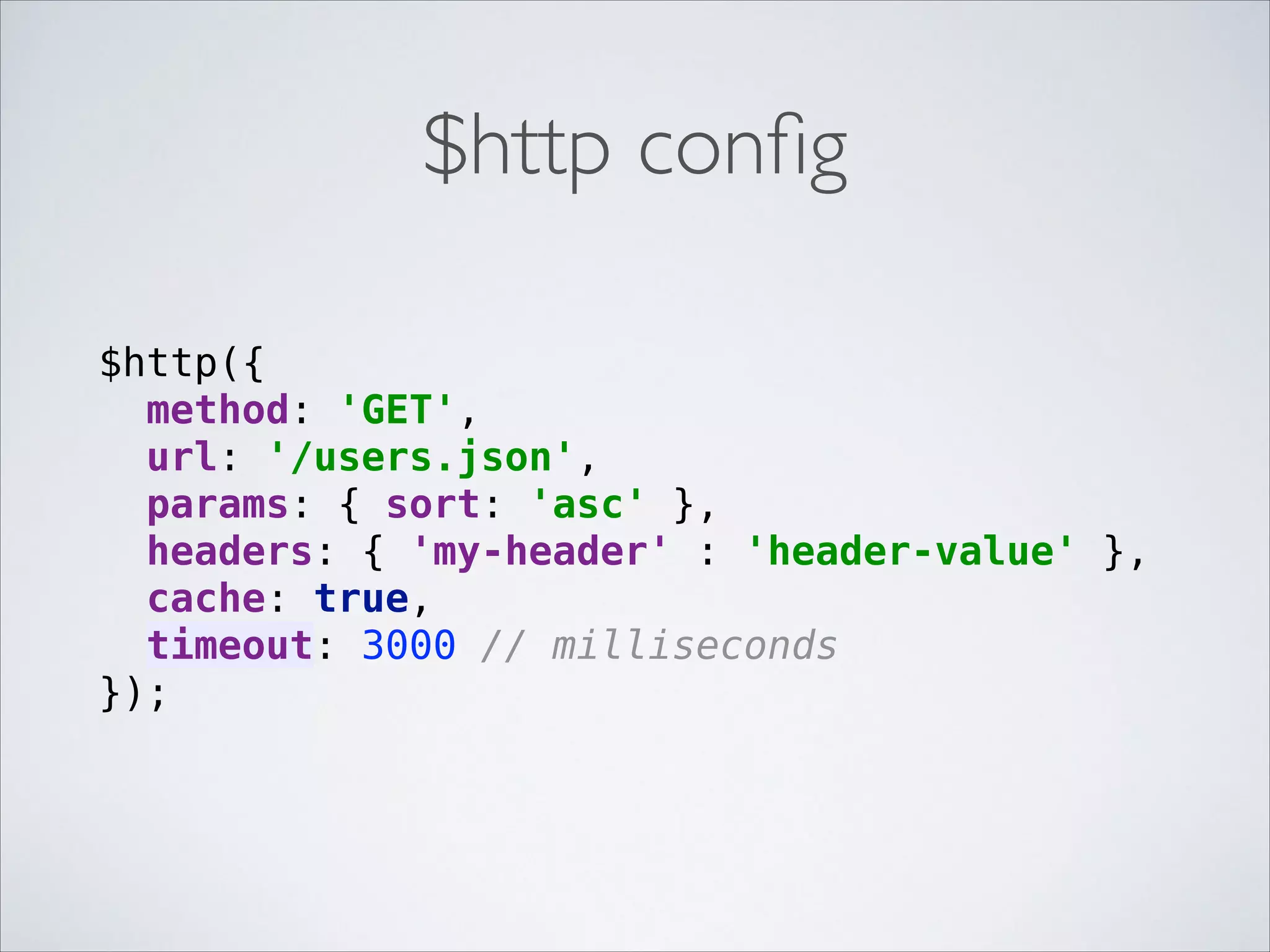
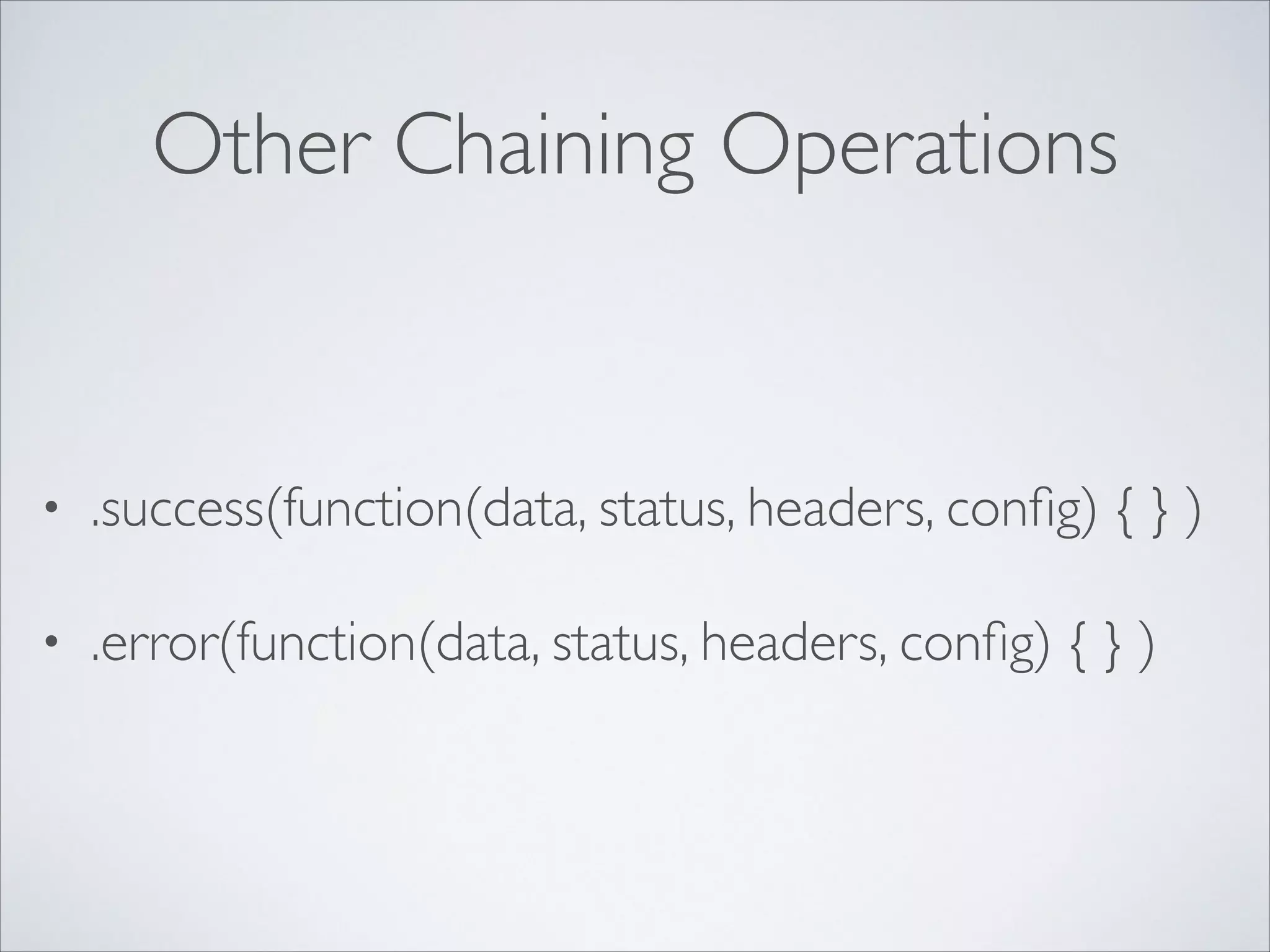

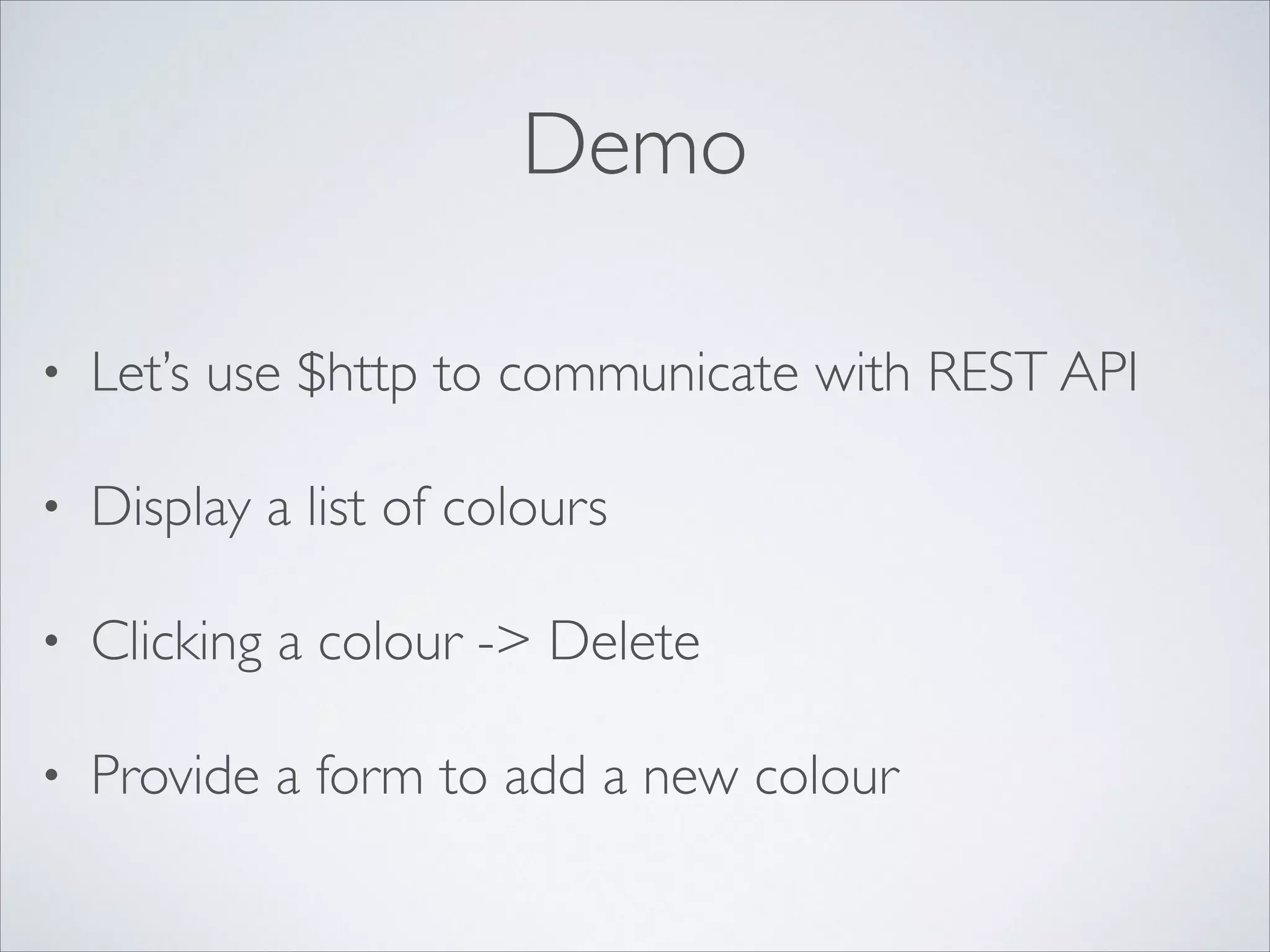

![Using ngResource var app = angular.module('MyApp', ['ngResource']);](https://image.slidesharecdn.com/angularjs-131106041531-phpapp01/75/Angularjs-76-2048.jpg)
![Using ngResource
app.controller('users', ['$scope', '$resource', function($scope, $resource) {
var Color = $resource('/colors/:id');
$scope.colors = Color.query();
}]);](https://image.slidesharecdn.com/angularjs-131106041531-phpapp01/75/Angularjs-77-2048.jpg)
![Using ngResource
app.controller('users', ['$scope', '$resource', function($scope, $resource) {
$scope.remove = function(id) { $scope.colors[id].$remove({id: id}, function() {
$scope.colors.splice(id, 1);
});
};
}]);](https://image.slidesharecdn.com/angularjs-131106041531-phpapp01/75/Angularjs-78-2048.jpg)
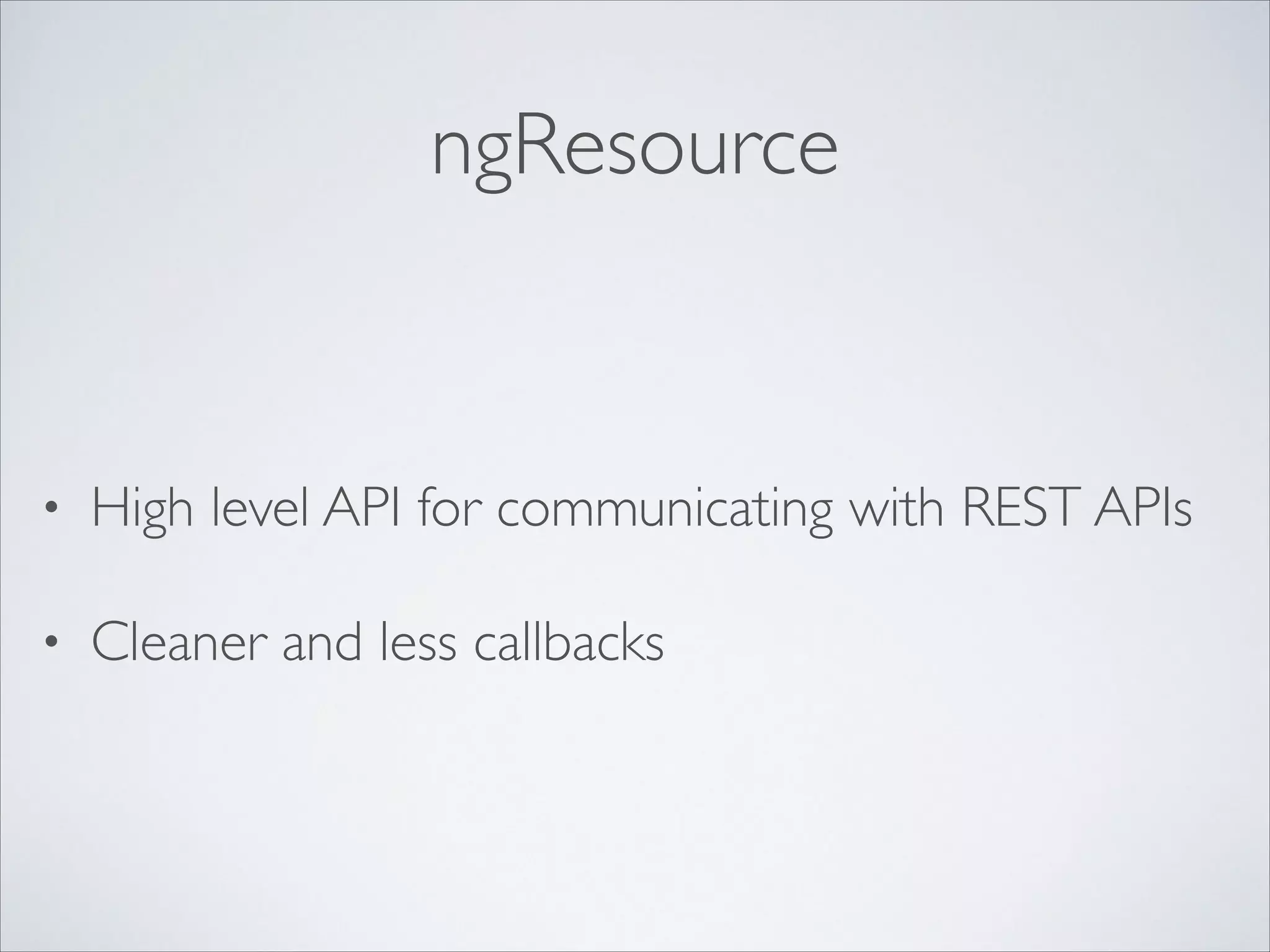

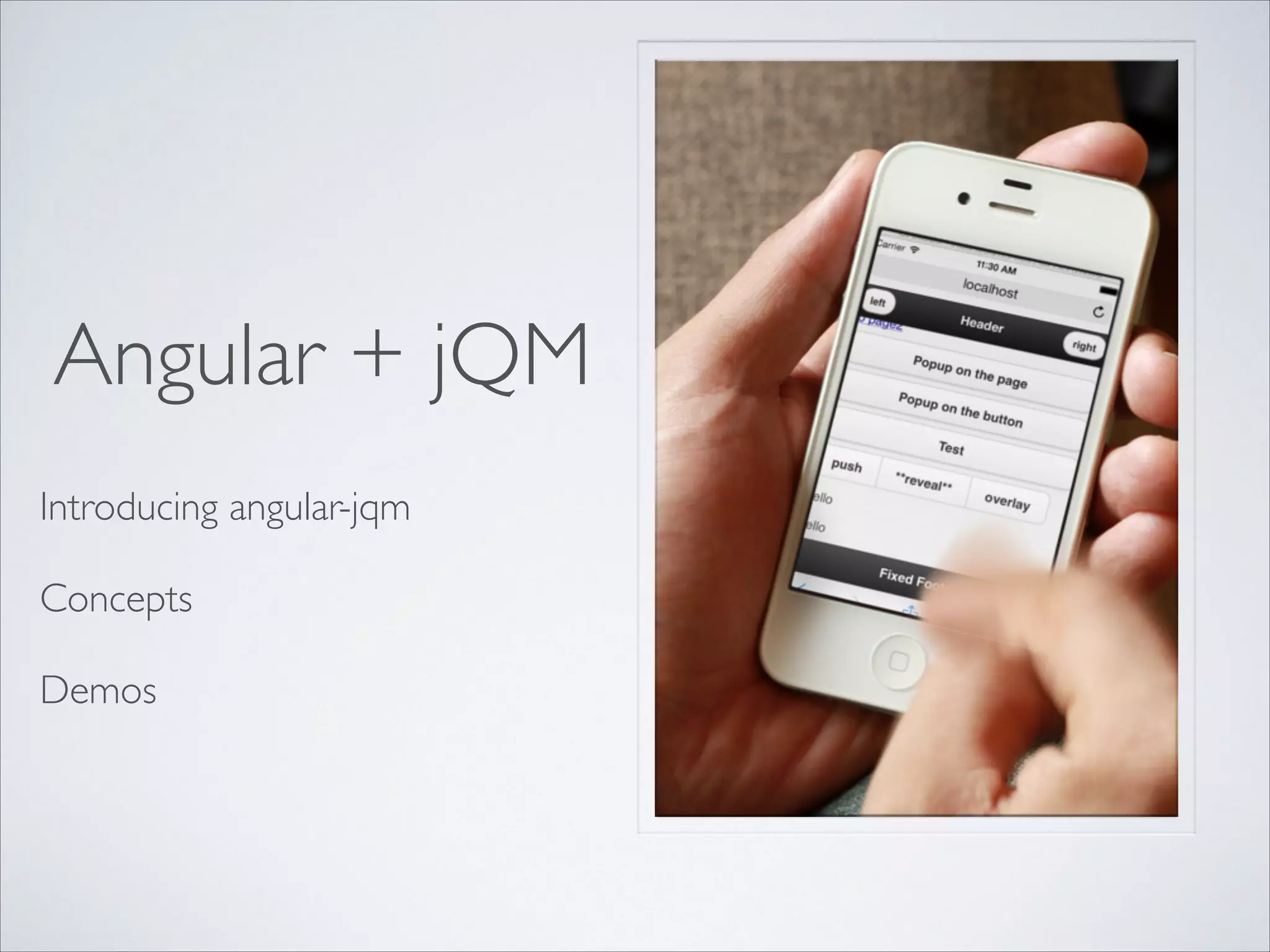


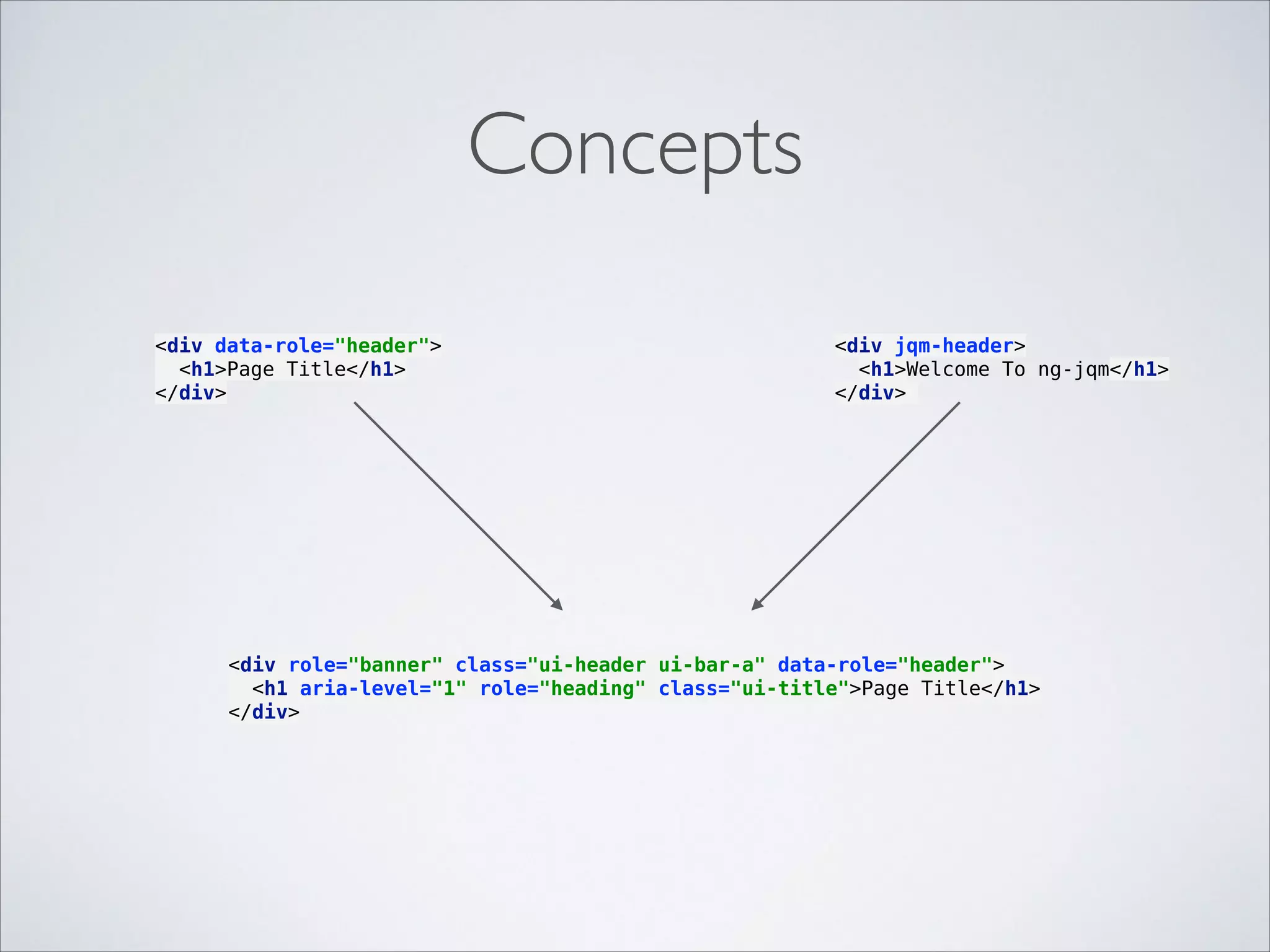
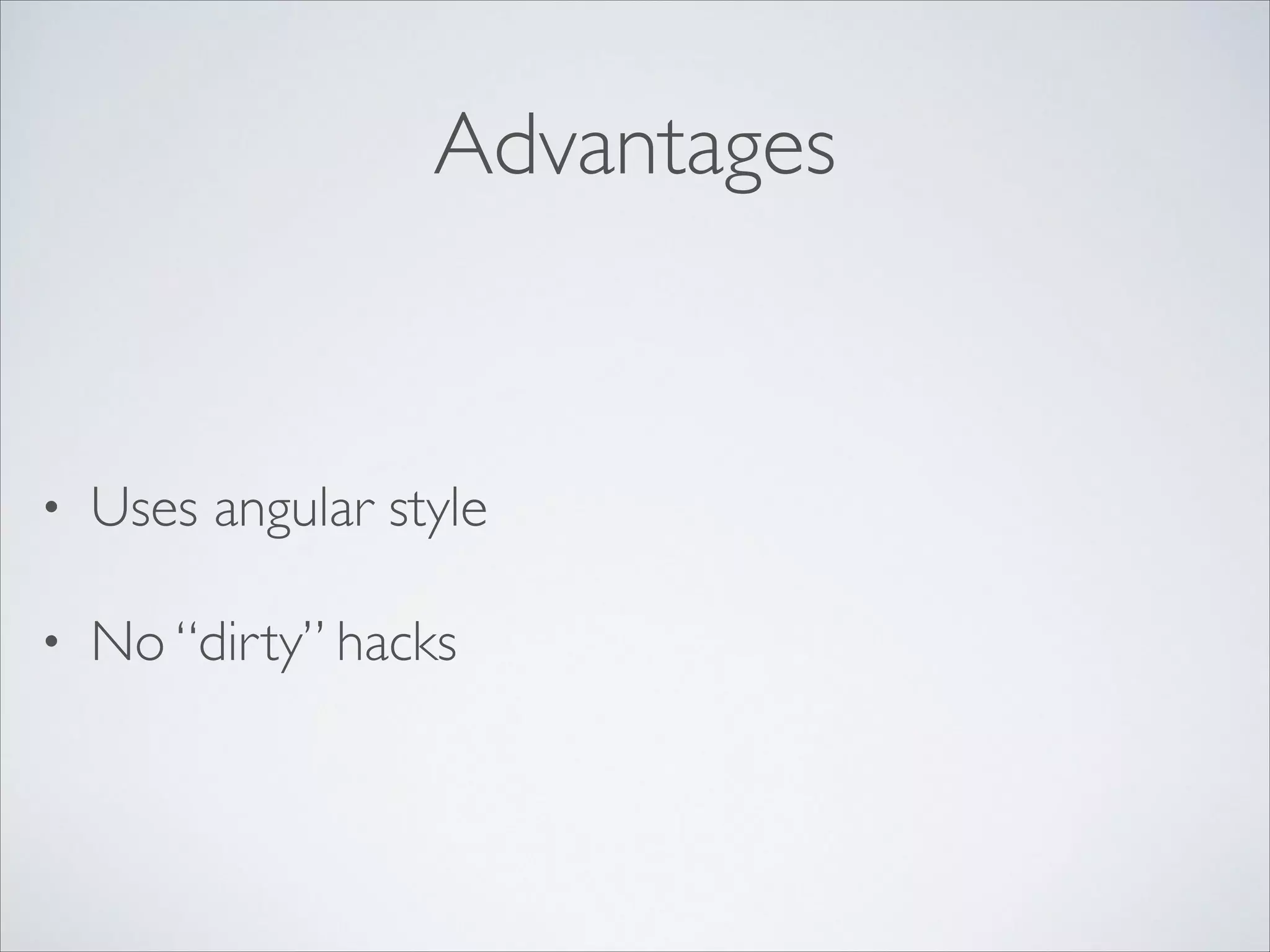
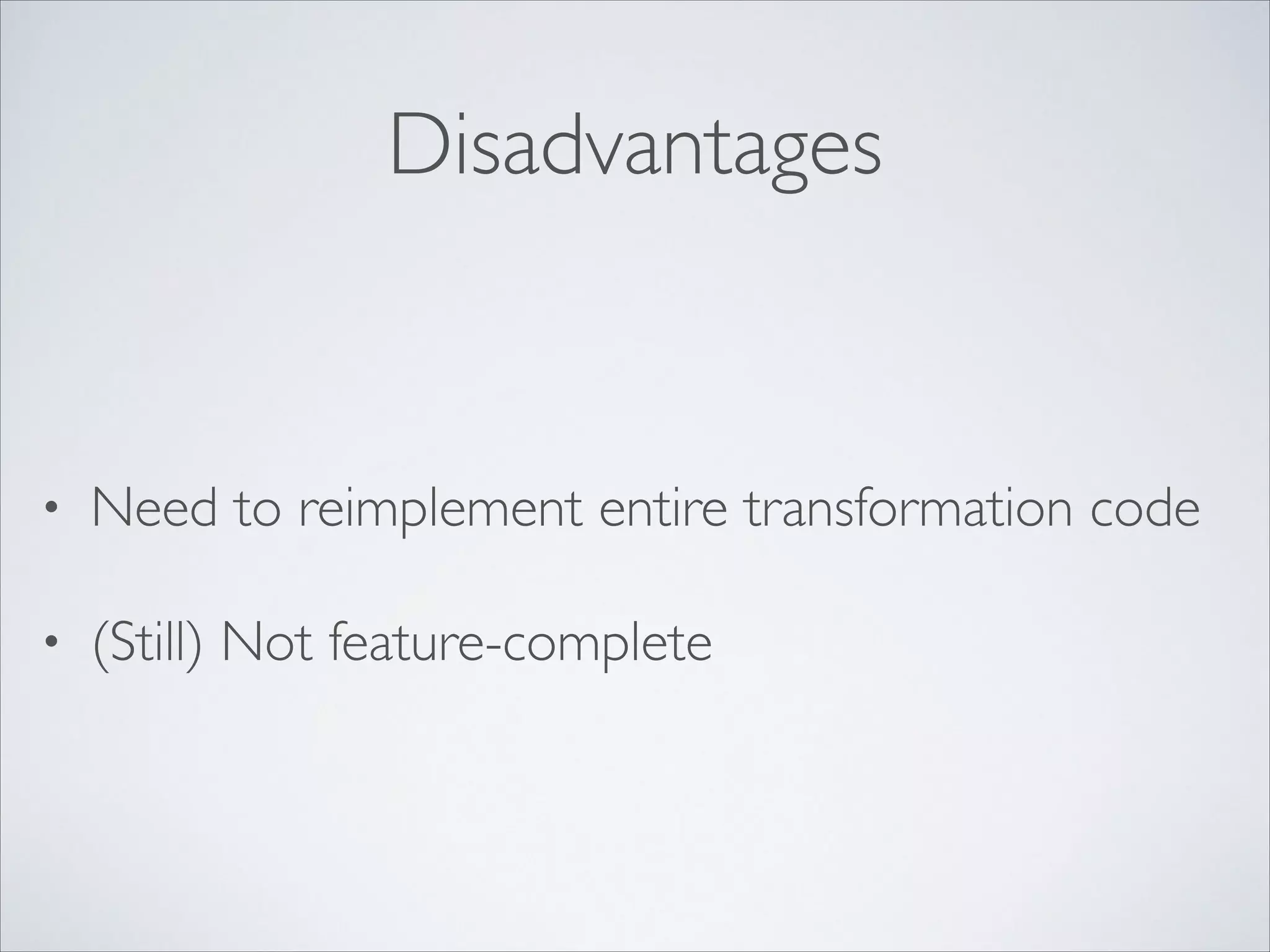

![angular-jqm boilerplate var mod = angular.module('app', ['jqm']);
mod.config(function($routeProvider) {
// A route for a single page
$routeProvider.when("/", {
redirectTo: "main.html"
});
// A route for all pages in one folder
$routeProvider.when("/:page", {
animation: 'page-slide',
templateUrl: function(params) {
return params.page;
}
});
});](https://image.slidesharecdn.com/angularjs-131106041531-phpapp01/75/Angularjs-88-2048.jpg)
